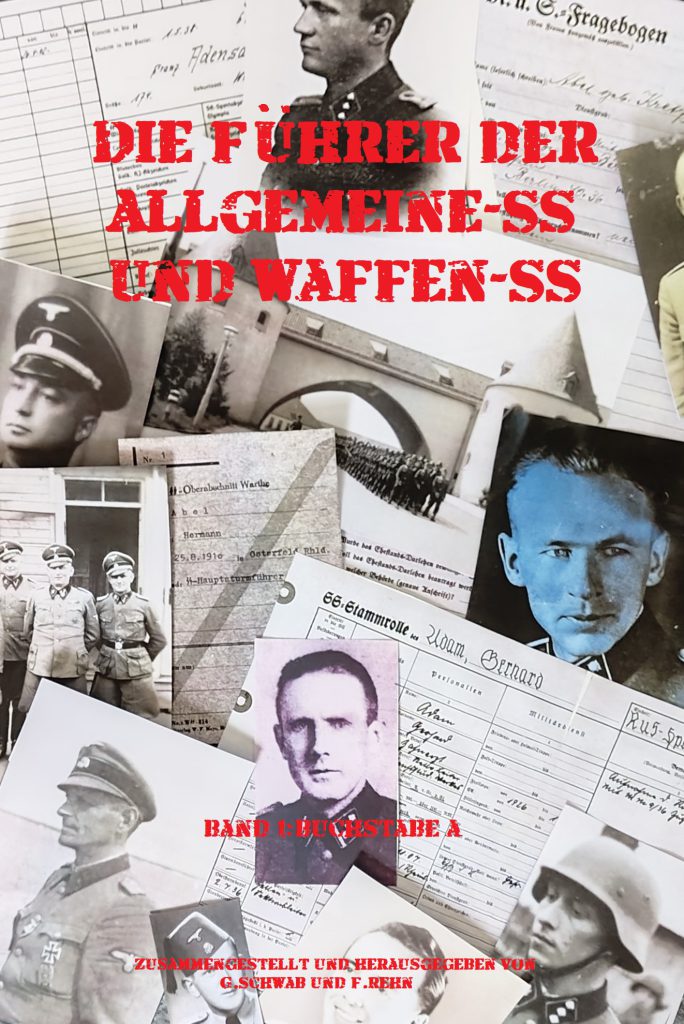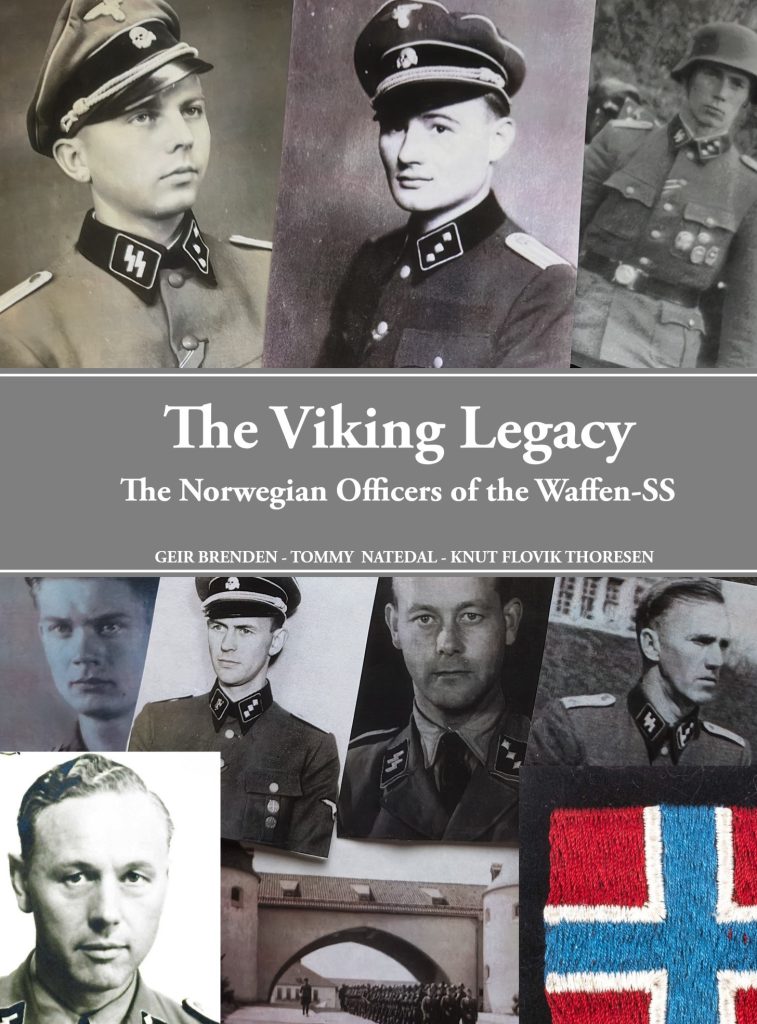Home » Standort
Category Archives: Standort
SS-Standort Arolsen (part 3 and the end)
January 00, 1943
Both the accommodation and distribution of the regiment at the locations in Arolsen, Korbach, Warburg and Wildflecken (II and III Divisions) as well as the equipment caused difficulties.
After the destruction of the barrier wall, parts of the regiment were deployed on rescue and recovery work in the Edertal from May 17th to May 25th, 1943.
(Bernd Joachim Zimmer, code name Arthur – The concentration camp external command in the SS leader school Arolsen, Verlag Gesamthochschul-bibliothek Kassel, 1994 p. 45)
In June 1943 the replacement regiment was moved to Munich.
(Bernd Joachim Zimmer, code name Arthur – The concentration camp external command in the SS leader school Arolsen, Verlag Gesamthochschul-bibliothek Kassel, 1994, p. 45, in contrast to the SS-VT “Germania”, the regiment has no deeper memories among the Arols population leave behind)
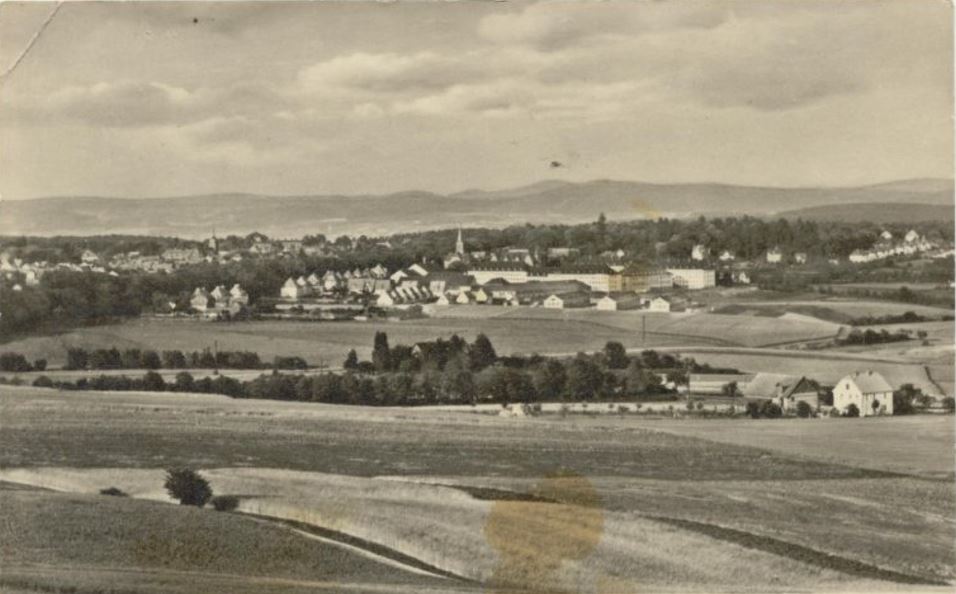
July 00, 1943
Relocation of the SS Flak Replacement Regiment in June to July 1943 to Munich-Freimarn to the barracks of the SS Regiment “Germany”, which was only completed in 1935 and was in use until June 1st. In 1943 it served as accommodation for the SS Artillery Replacement Regiment that was relocated to Prague.
In terms of size, this barracks was also able to accommodate the extremely strong units of the anti-aircraft training and replacement regiment; meaningful and concentrated training could be carried out here.
Later, however, barracks had to be built here to accommodate the recruits. The strength of the regiment at this time was approximately 6,000 men.
Since the final structure had not yet been determined, the batteries were named after the names of their leaders, for example the battery “Dreike”, “Wunderlich” or “Graupner”.
This was followed by a short-term occupancy with the newly formed SS Panzer Reconnaissance Training Department 2, which, however, withdrew from Arolsen on September 13, 1943 and was relocated to the SS military training area “Seelager”.
(Bernd Joachim Zimmer, code name Arthur – The concentration camp external command in the SS leader school Arolsen, Verlag Gesamthochschul-bibliothek Kassel, 1994, p. 45)
Wilhelm Tieke, after basic training in 1940 with the SS Motorcycle Rifle Replacement Battalion Ellwangen then with the 15th/“Nordland”, came after being wounded on February 4, 1943 via various hospitals, most recently Res.Laz. Brieg until the summer of 1943, after a convalescent vacation at home, to the reserve unit: “… Ellwangen an der Jagst, the starting point of my soldiering, has me back.
But soon I will be transferred to Arolsen with other old front hands to set up a new one, Reconnaissance, Training and Replacement Department 2.
Arolsen is a small garrison town in Waldeckschen. The “Germania” battalion was once located here and then the anti-aircraft replacement and training department, which was expanded into a regiment and relocated to Munich.
The new department, led by Hauptsturmführer Keitel, is still in its early stages. Even the supporting staff is not yet fully available and so there is only a lukewarm service. Tattooing is only on paper for the time being, because UvD and those on guard are provided by us squad leaders and storm men, and as is well known, “one crow doesn’t peck out the eyes of another”. We get up to all sorts of mischief…”
Among other things, this resulted in a curfew of fourteen days for the entire department. But “motorcycle driving schools” are also run, even with night rides.
“…One day the skeleton of the company will be in place. Recruits arrive, but soon it is announced that all tank and reconnaissance replacement departments of the Waffen-SS will be relocated to Latvia, including our department…”
(Wilhelm Tieke, A restless march was our life, Munin-Verlag, Osnabrück, 1977, pp. 199, 204, 209-211)
The above-mentioned Hauptsturmführer “Keitel” was the SS-Hstuf at the time. Friedrich Keidel.
Keidel, Friedrich SS- Stubaf. 9. 9.1895 KIA 8.4421.8.1944 In Kurland as part of the SS-Pz.Brig. “Gross”
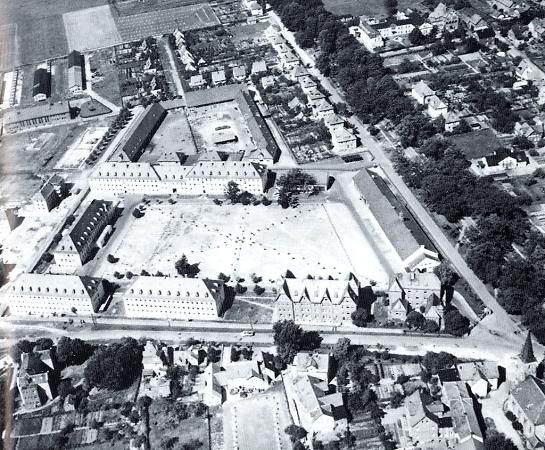
On November 14, 1943, a prisoner transport was set off from the Weimar-Buchenwald camp to Arolsen in order to complete the preparatory work for the relocation of the SS leadership school of the economic and administrative service from Dachau.
(Bernd Joachim Zimmer, code name Arthur – The concentration camp external command in the SS leader school Arolsen, Verlag Gesamthochschul-bibliothek Kassel, 1994, p. 51)
In January 1944, after the renovations were completed, the school began operating in Arolsen, which continued until the end of March 1945.
(Bernd Joachim Zimmer, code name Arthur – The concentration camp external command in the SS leader school Arolsen, Verlag Gesamthochschul-bibliothek Kassel, 1994, p. 86)
In addition to the SS leader school, an SS clothing warehouse was relocated to Arolsen at the end of 1943 as a branch of the SS clothing factory in Dachau.
(Bernd Joachim Zimmer, code name Arthur – The concentration camp external command in the SS leader school Arolsen, Verlag Gesamthochschul-bibliothek Kassel, 1994, p. 108)
After a combat group made up of members of the school and course participants was formed on January 30th, 1945 with the keyword “Gneisenau”, which was relocated to the Oder front, the last two combat groups from the school moved out on Monday, March 26th, 1945, assembled from, among others The remaining 200 SS members, slightly ill people and soldiers from a front-line holiday train were deployed against the advancing American troops in the direction of Marburg.
(Bernd Joachim Zimmer, code name Arthur – The concentration camp external command in the SS leader school Arolsen, Verlag Gesamthochschul-bibliothek Kassel, 1994, pp. 289, 290)
On March 29, 1945, the Arolsen prisoner external command, which had existed since the SS leader school was there, was relocated back to Weimar-Buchenwald.
(Bernd Joachim Zimmer, code name Arthur – The concentration camp external command in the SS leader school Arolsen, Verlag Gesamthochschul-bibliothek Kassel, 1994, p. 293ff)
Around midnight on Good Friday, March 30, 1945, the shelling of the city center of Arolsen began with grenades, but there were no casualties among the civilian population and the damage to the post office, pharmacy and some commercial buildings remained minimal.
On March 30, 1945, the city of Arolsen was occupied by American troops.
(Bernd Joachim Zimmer, code name Arthur – The concentration camp external command in the SS leader school Arolsen, Verlag Gesamthochschul-bibliothek Kassel, 1994, p. 302)
… the SS barracks in Arolsen were officially called Germania barracks and were located on the corner of Große Allee and Kasernenstraße (today Birkenweg)
The barracks, built in 1870 for the Wittich (3rd Kurhessisches) Infantry Regiment No. 83, were greatly expanded in the mid-1930s. From 1933 an SA relief organization and an SA sports school were housed there until the SS claimed ownership of the area in 1935 and the city terminated the SA’s lease.
Below is a plan of the barracks from 1937. During its use as an SS leader school from autumn 1943, the occupancy was as follows:
Blocks A, B: command staff, headquarters company
Blocks C,D,F,G: Accommodation for course participants
Block E: Administration of the SS clothing warehouse
S: Stables
R: Riding hall
HS: Woodshed (to SS clothing warehouse)
Quelle: Lagis Hessen
http://forum-der-wehrmacht.de/thread.php?postid=360356#post360356
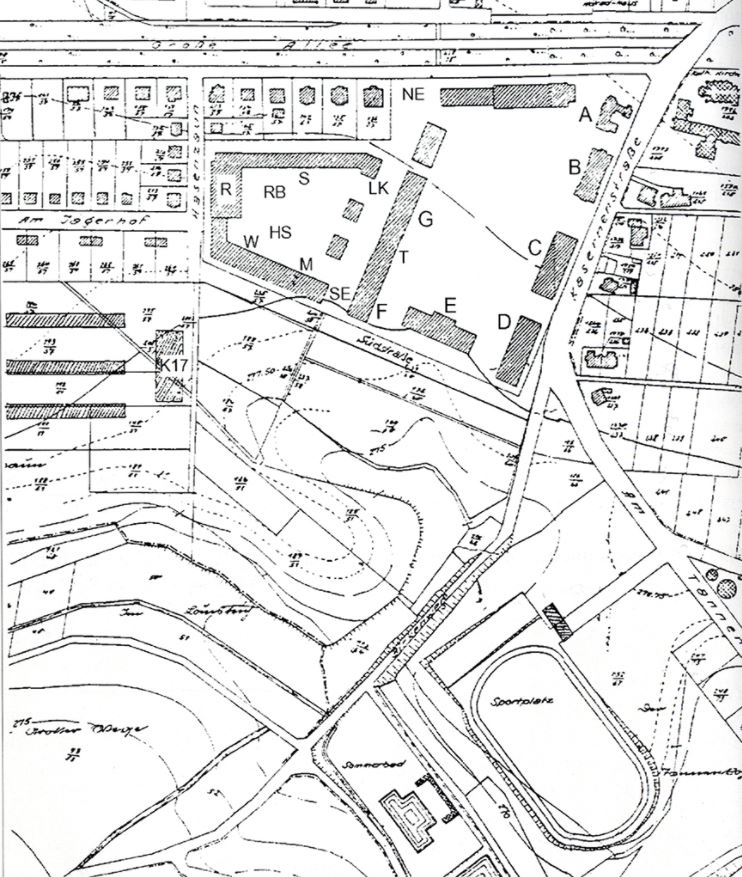
The end
Auhtor and Images Roland Pfeiffer
SS-Standort Arolsen (part 2)
September 9, 1940
Relocation of the AA-MG replacement company to Arolsen/Waldeck
Waffen SS Command, Ia TgbNo. 1024/40 go v. September 9, 1940
Re: Relocation of the anti-aircraft machine gun company
1.) The AA-MG replacement company will be relocated from the SS accommodation “Germania”, Munich to Arolsen, SS barracks with immediate effect.
2.) The transport of the AA-MG-ErsKomp including weapons, equipment, clothing and equipment is to be carried out as a training trip with motor vehicles.
3.) If transport according to point 2 is not possible, rail transport must be registered.
4.) Accommodation in Arolsen is to be taken over by the Fla-Mg-ErsKomp advance command.
5.) The anti-aircraft machine gun replacement company is economically assigned to the Pz.-Jäger-Ers.-Abt at the time of transfer.
The billing for the month of August is to be carried out by the SS-Standarte “Deutschland” administration.
The chief of staff signed Jüttner, SS brigade leader
In the course of clearing the SS barracks Munich-Freiman for the installation of the SS standard “Westland”, the SS-Fla-MG-Ers.Kp. According to the order of the Waffen-SS command on August 9, 1940 in the motorized march to Arolsen.
There the company, SS-Ostuf. Fend, economically assigned to the SS-PzJgErsAbt. Accommodation will initially take place in a gymnasium until appropriate accommodation options are created on the barracks grounds. (WV)
The company was in the barracks of the III./Infanterie-Regiment 83 before the First World War, then that of the II./SS-Standarte “Deutschland”.
At the beginning of September 1940, the SS anti-aircraft machine gun replacement company that had been set up in Munich immediately after the start of the war was moved to the Arols barracks and expanded into an SS anti-aircraft machine gun department.
(Bernd Joachim Zimmer, code name Arthur – The concentration camp external command in the SS leader school Arolsen, Verlag Gesamthochschul-bibliothek Kassel, 1994, p. 45)
At the beginning of 1941, the expansion and formation of an SS anti-aircraft replacement department began.
Department Commander. SS-Hstuf.d.R Franz Jaegy 00.00.41 – 00.00.42
Adjutant: SS-Ostuf. Ball 00.00.41 – 00.00.42
Ordnance officer: SS-Ustuf. Stern 00.00.42 – 00.00.42
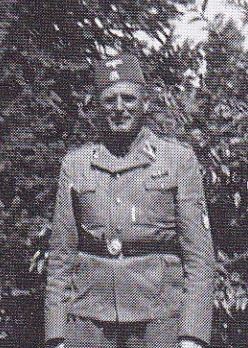
Chief of Staff Battery: SS-Ostuf.d.R.Max Daumer 00.00.41 – 00.00.00
SS-Ostuf. Seriously 00.00.00 – 00.00.00
SS-Ostuf. Wendt 00.00.00 – (00.07.42)
Chief 1st Battery (8.8.cm): SS-Ostuf.d.R.Dr.Wolfgang Loenicker 00.00.41 – 00.00.42
SS-Ostuf.Herbers 00.00.42 – 00.00.42
Chief 2nd battery (3.7 cm): SS-Ostuf.d.R. Karl Bergrath 00.00.41 – 00.03.42
Chief 3rd Battery (2 cm): SS-Ostuf.Schettgen 00.00.41 – 00.00.42
The recruits received their basic training in the three gun batteries and were trained as gunners. The training period was 8 weeks.
In addition to the basic infantry training, radio operator, telephone and motor vehicle training was carried out in platoons in the staff battery.
In the spring of 1941, the first twenty young leaders trained for anti-aircraft guns arrived in Arolsen, 10 as measurement and battery officers for the heavy batteries and 10 for the light anti-aircraft weapons.
April 1, 1941
On April 1, 1941, the department moved to the barracks in Unna/Westphalia that had been left empty due to the relocation of the SS News Replacement Department.
In April 1941, this department was briefly relocated to the empty barracks in Unna, but returned to Arolsen with effect from August 15, 1941.
(Bernd Joachim Zimmer, code name Arthur – The concentration camp external command in the SS leader school Arolsen, Verlag Gesamthochschul-bibliothek Kassel, 1994, p. 45)
June 1, 1941
Appendix 1 to Ordinance Gazette No. 10, Volume 2 v. 1.6.41, changes and additions according to Ordinance Bulletin. No. 16, 1.9.41 and No. 22, 1.12.41
(Mehner, pp.54-56, see also Jörg-M.Hormann, The Ordinance Gazette of the Waffen-SS – A Selection, Fitsch-Form-Verlagsgesellschaft Hannover, 1980)
SS-Panzerjäger-ErsAbt Arolsen
As of June 1, 1941, the SS-Pz.Jg.Ers.Abt. Arolsen responsible replacement unit for everyone
Tank destroyer divisions
Tank destroyer companies and
Tank destroyer platoons
of the field troops of the Waffen-SS, except for the corresponding tank destroyer units of the SS Police Division.
Their replacement unit moved from Königshütte to the Netherlands in April 1941 after Silesia had to be cleared for the deployment against the Soviet Union. The SS-Pol.-Pz.Jg.Ers.Kompanie and the SS-Pol.Pz.Jg.Zug were now in Weerdt.
The days of the SS-Pz-Jg.Ers.Abt in Arolsen are also numbered. The SS Arolsen barracks is intended as future accommodation for the SS anti-aircraft replacement department currently in Unna. (WV)
June 1, 1941
Appendix 1 to Ordinance Gazette No. 10, Volume 2 v. 1.6.41, changes and additions according to Ordinance Bulletin. No. 16, 1.9.41 and 22, 1.12.41 (Mehner, p.54-56)
SS-Flak-Ers.Abt Unna, later Arolsen
According to V.Bl.d.W.-SS, 2nd year, 1941, No. 10 from June 1, 1941, appendix 1 to number 236
List of the responsible replacement units of the Waffen-SS
is the SS-Flak-Ers.Abt. Unna responsible replacement troop unit for
all members of the Flak-Abt. and unit. (without anti-aircraft gun, s.SS-Kraftfahr.Ers.Abt) including message men etc.
(Jörg-M.Hormann, The Ordinance Gazette of the Waffen-SS – A Selection, Fitsch-Form-Verlagsgesellschaft Hannover, 1980)
July 5, 1941
Relocation of the “SS Panzerjäger Replacement Department” to the Dordrecht area in the Netherlands.
At the beginning of July 1941, the order was issued to relocate the SS-PzJgErsAbt from Arolsen to the Netherlands. A little later, the railway transport department moved to its new locations. When it arrives in the Netherlands, the department is tactically and operationally subordinate to the “Commander of the Waffen-SS in the Netherlands”.
Accommodation takes place in makeshift accommodation in the Dordrecht area. (WV)
July 16, 1941
SS-FHA, KdoAmt d. W SS, Abbot Ia/Be/Oe, Tgb.No. 2825/41 belongs to 16.7.41 Composition of the Waffen SS with the repeal of the Vfg. SS-FHA, Ia/G/Keu, TgbNr.1484/41 geh.v.22.4.41 (Hausser, Swaa, p. 291 ff)
SS-FlakErsAbt Unna
August 15, 1941
V.Bl.d.W.-SS, 2nd year, 1941, No. 15 from August 15, 1941, number 317 change of address
The new address of the SS-Flak-E.-Abt. is
SS Flak E. Department
Arolsen/Waldeck
SS barracks Kdo.d.W-SS office
(Jörg-M.Hormann, The Ordinance Gazette of the Waffen-SS – A Selection, Fitsch-Form-Verlagsgesellschaft Hannover, 1980)
April 20, 1942
SS-FHA, KdoAmt d. Waffen SS, OrgTgbNo. 2302/42 belongs to April 20, 1942:
Re: Setting up a convalescent battery of the SS-Flak-ErsAbt
Reference: Application from the SS-Flak-ErsAbt dated April 16, 1942
1.) At the request of the SS-Flak-ErsAbt, the establishment of a “convalescent battery” was approved for this unit in the SS barracks in Unna/Westphalia with effect from April 25, 1942.
2.) The commander must keep the battery at its lowest strength.
A KSTN and KAN does not apply to filling positions.
3.) The convalescent battery is disciplinarily subordinate to the Kdr of the SS-Flak-ErsAbt.
The chief of staff, signed Jüttner, SS group leader and lieutenant general of the Waffen SS
F.d.R. signed Fick, SS-Obersturmbannführer
Whether this convalescent battery is according to the orders of the SS Gruf. and Gen.Lt. d. W-SS Krüger, SS-FHA, Kdo.Amt d. W-SS, Abbot I d, Ref. 34d v. 13.4.42, division of the convalescent companies into 4 platoons, it cannot yet be said:
I. Platoon men who will be kv again in the foreseeable future, up to 4 weeks
II platoon men who will only be commissioned again after a long time
III platoon men who are no longer commissioned
IV. Platoon receiving platoon, with the task of receiving the SS men coming from the hospitals and assigning them to the I., II. or III. platoon depending on their level of suitability (BA NS 756/ 345)
In December 1942 the department was expanded into an SS anti-aircraft replacement regiment under the leadership of SS-Standartenführer Burk.
(Bernd Joachim Zimmer, code name Arthur – The concentration camp external command in the SS leader school Arolsen, Verlag Gesamthochschul-bibliothek Kassel, 1999, p. 45)
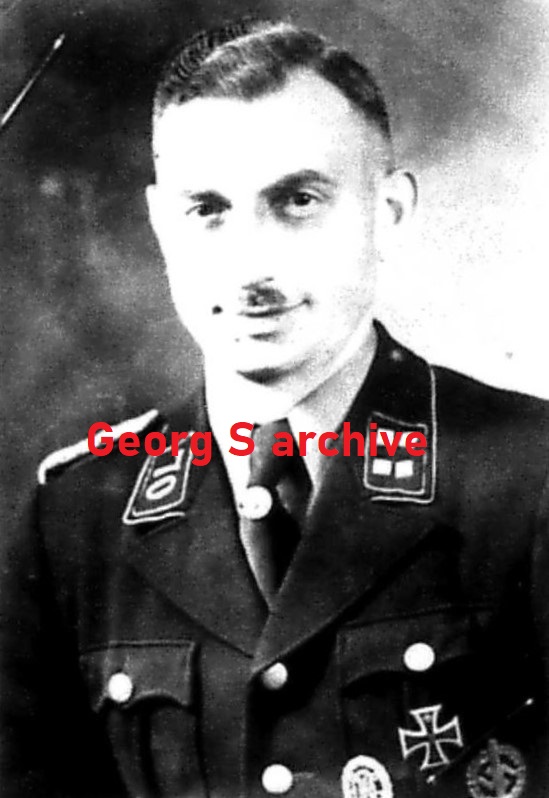
December 4, 1942
By order of the SS-FHA, Berlin-Wilmersdorf, Kaiserallee 188; The reorganization of the SS Flak Replacement Department into an SS Flak Replacement Regiment was ordered.
SS-FHA, KdoAmt d. Waffen SS, OrgTgbNo. 8071/42 belongs to December 4, 1942:
Re: Reorganization of the SS Flak Replacement Division into an SS Flak Replacement Regiment
Reference: SS-FHA, Org.Tgb.No. 34/41 g.Kdos v. 02/11/41
SS-FHA, Org.Tgb.No. 1180/41 go to v. 04/08/41
SS-FHA, Org.Tgb.No. 1798/41 go to v. 05/14/41
SS-FHA, Org.Tgb.No. 5010/41 belongs to 11/22/41
1.) With effect from March 11, 1943, the SS Flak Replacement Division ordered to be set up and expanded in the above-mentioned orders will be reclassified into an SS Flak Replacement Regiment.
2.) The following will be reclassified:
1 staff Flak-ErsAbt KSTN and KAN 2912 (L) from. 1.4.39 in
1 Staff Army Flak Artillery Replacement Regiment KSTN and KAN 6213 v. 1.4.41
1 Stabs- und Nachr.Bttr of a Flak-ErsAbt KSTN and KAN 2917 (L) from. 1.4.39 in
1 measuring battery HeerFlakartErsRgt from KSTN and KAN 6237 v. 1.4.42
only a) group leader and b) intelligence replacement platoon,
in addition from Kraftfahr-ErsKp KSTN and KAN 6631 v. 1.4.41
c) 1st move
1 Flak-ErsBttr (5 Gesch 8.8cm) after KSTN and KAN 2925 (L) from. 1.4.39 in
1 Army FlakErsBttr (8.8 cm) KSTN and KAN 238 BC 1.6.41
plus from measuring battery HeerFlakArtErsAbt KSTN and KAN 6237 v. 1.4.42
d) Flight evaluation replacement train
1 Flak-Ers.Bttr (9 stories 3.7 cm) according to KSTN and KAN 2923 (L) from. 1.4.39 in
1 Heer Flak.Ers.Bttr (3.7 cm) KSTN and KAN 6239 v. 1.6.41
plus a 3rd gun platoon like b) 1st gun platoon
1 Flak.Ers.Bttr (12 stories 2 cm) according to KSTN and KAN 2921 (L) from. 1.4.39 in
1 FlakErs company KSTN and KAN 6031 v. 1.4.41
without b) news relay and f) driving school
3.) For the SS-Flak-Ers.Rgt the following must be set up by In 4:
1 heavy abbot’s staff according to KSTN and KAN 6213 BC. 1.6.41 as appendix
1 light abbot’s staff according to KSTN and KAN 6213 BC. 1.6.41 as appendix
1 Army FlakErs battery 8.8 cm according to KSTN and KAN 6238 v.1.6.41
plus from measuring battery HeerFlakArtErsAbt KSTN and KAN 6237 v. 1.4.42
d) Flight evaluation replacement train
1 Flak.-Ers.Kp (mot) according to KSTN and KAN 6031 v. 1.4.41
without b) news relay and f) driving school,
There is also a 4th slide equipped with a 2 cm multi-ring
4.) According to the decree SS-FHA,OrgTgbNo. 5010/41 go to The SS Police Flak Replacement Battery set up for the SS Police Division on November 22, 1941 is immediately disbanded. Subcommanders, teams, weapons, equipment and vehicles are to be used in the reorganization of the SS Flak replacement department.
5.) After the reorganization or reorganization, the SS Flak Replacement Regiment is structured as follows:
1 staff anti-aircraft replacement regiment KSTN and KAN 6213 v. 1.6.41
1 staff battery Flak-ErsRgt KSTN and KAN 6237 v. 1.4.42
with a) group leader b) news replacement train
in addition from KraftfahrErsKp KSTN and KAN 6631 v. 1.4.41
c) 1 platoon of driver replacement company
1 convalescent company
1 staff anti-aircraft replacement department / heavy department KSTN and KAN 6213 v. 1.6.41
2 flak batteries 8.8cm KSTN and KAN 6238 v. 1.6.41
for each 8.8cm sheet
Measuring battery HeerFlakArtErsAbt KSTN and KAN 6237 v. 1.4.42
d) a flight evaluation replacement train
1 staff anti-aircraft replacement department / light department KSTN and KAN 6213 v. 1.6.41
1 army anti-aircraft battery 3.7 cm with 3 platoons KSTN and KAN v. 1.6.41 as appendix
plus a 3rd gun platoon like b) 1st gun platoon
2 anti-aircraft spare parts (mot) 2 cm KSTN and KAN 6031 v. 1.4.41
without b) news relay and f) driving school with 3 trains each 2 cm solo,
In addition, for a company, a 4th platoon like c) 1st platoon is equipped with 2cm four of a kind.
6.) Leader and sub-leader positions are to be filled by the SS Flak Replacement Regiment.
7.) Weapons, equipment and vehicles are to be taken from the stocks of the SS Flak Replacement Department. School vehicles must be requested from the SS-FHA, Office X.
8.) KSTN and KAN as well as regulations are assigned by the SS-FHA, regulations office
9.) In 4 in the SS-FHA is responsible for the reclassification or realignment.
10) The SS-FHA, Command Office of the Waffen SS, Abt
organization to report.
11.) Relocation of an SS-Flak-ErsAbt from Arolsen to another location is ordered separately.
The chief of staff signed Jüttner, SS group leader and lieutenant general of the Waffen SS
F.d.R. signed Fick, SS-Obersturmbannführer
End of part 2, the next part will soon be published.
Author Roland Pfeiffer, images Georg Schwab
SS-Standort Arolsen (Part 1)
The garrison period began with the arrival of the newly established Fusilier Battalion of the 3rd Hessian Infantry Regiment in Arolsen and Mengeringhausen in 1867.
Only now did construction of a barracks begin at the intersection of Große Allee and the unpaved road to Mengeringhausen, which was completed in 1870.
After 1871, a variety of new buildings, conversions and extensions followed.
On August 1, 1897, barracks B was officially taken over in the immediate vicinity of the courtyard entrance,
on September 30th at the officers’ mess on the northbound lane of Große Alle and
on July 4, 1908 of the staff building at the main entrance to the parade ground. In addition, a hospital was built on the eastern side of the unpaved road to Mengeringhausen, which was later called “Kasernenstraße”.
The battalion stood in Arolsen for 43 years until it was bid farewell by the royal family on the parade ground on the afternoon of August 2, 1914. 105 officers. 220 non-commissioned officers and 1,781 men lost their lives during the World War.
On November 29, 1918, the “Wittich Infantry Regiment No. 83” was disbanded, which meant that the garrison period in Arolsen ended.
This was followed by 15 years of civilian use of the barracks area.
(Bernd Joachim Zimmer, code name Arthur – The concentration camp external command in the SS leader school Arolsen, Verlag Gesamthochschul-bibliothek Kassel, 1994, pp. 17 – 19)
In March 1933, a Voluntary Labor Service camp was set up in parts of the barracks. In June 1933 this was moved out of the barracks again and an “SA relief organization” moved in; The SA then took over the entire area for its “SA sports school” at the end of November 1933.
The rental agreement was then terminated by the city on March 18, 1935.
(Bernd Joachim Zimmer, code name Arthur – The concentration camp external command in the SS leader school Arolsen, Verlag Gesamthochschul-bibliothek Kassel, 1994, pp. 21-22)
On April 20, 1935, the formation of the 2nd Sturmbanne of the 2nd Standard of the SS-Verfügungstruppe began under the former World War officer, Walter Krüger.
(Bernd Joachim Zimmer, code name Arthur – The concentration camp external command in the SS leader school Arolsen, Verlag Gesamthochschul-bibliothek Kassel, 1994, p. 23, further details on the following pages)
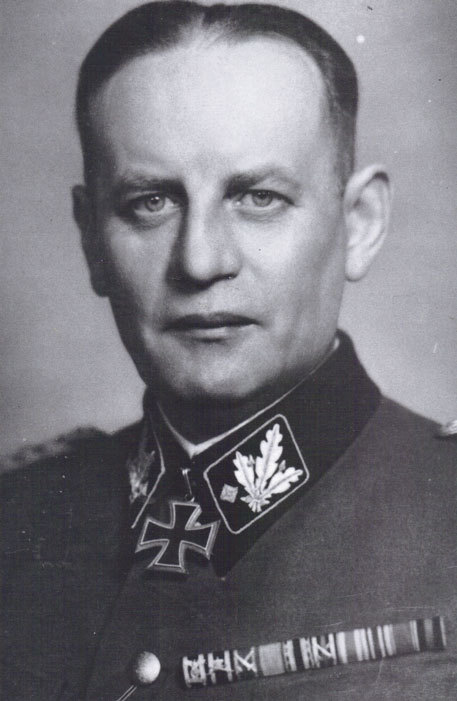
On September 5, 1935, the groundbreaking ceremony took place for the construction of new supply buildings for the SS barracks.
(Bernd Joachim Zimmer, code name Arthur – The concentration camp external command in the SS leader school Arolsen, Verlag Gesamthochschul-bibliothek Kassel, 1994, p. 77)
On October 1, 1936, the Sturmbann was officially converted into the “Germania” standard.
(Bernd Joachim Zimmer, code name Arthur – The concentration camp external command in the SS leader school Arolsen, Verlag Gesamthochschul-bibliothek Kassel, 1994, p. 29)
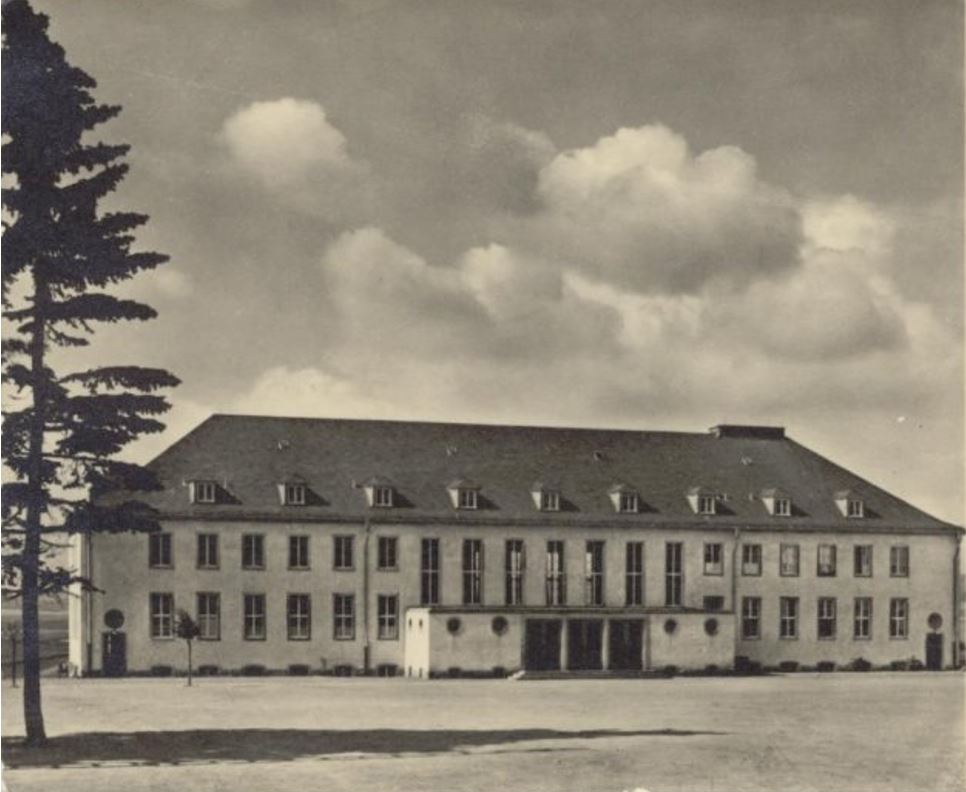
On August 17, 1939, the II Sturmbann “Germania” left the barracks as part of the mobilization plan.
During the Polish campaign the barracks were largely empty.
At the turn of the year 1939/40, the barracks was briefly occupied by various SS units (which one?), before an infantry regiment of the SS Totenkopf Division waited in quarters in the Nordwaldeck area to receive further marching orders for the attack in the west.
(Bernd Joachim Zimmer, code name Arthur – The concentration camp external command in the SS leader school Arolsen, Verlag Gesamthochschul-bibliothek Kassel, 1994, p. 45)
Unfortunately, this information cannot be verified.
Between March 7 and 10, 1940, the SS Totenkopf Division was relocated from the Münsingen military training area to the Brilon – Frankenberg – Korbach – Arolsen – Niedermarsberg area. The SS T. Artillery Regiment and its staff are said to have been housed in Arolsen.
(Wolfgang Vopersal, Soldiers, Fighters, Comrades, Volume 1, pp. 60, 63)
On Friday, March 21, 1940, the needy parts of the population in Arolsen were fed from the field kitchen of the SS-T.-Art.Regiment. To mark the occasion, the band is giving a concert (p. 81)
The T.-Art.Rgt conducted a sharpshooting event on the Tr.Üb.Pl. from April 15th to 19th, 1940. Schwarzenborn through. (p. 79)
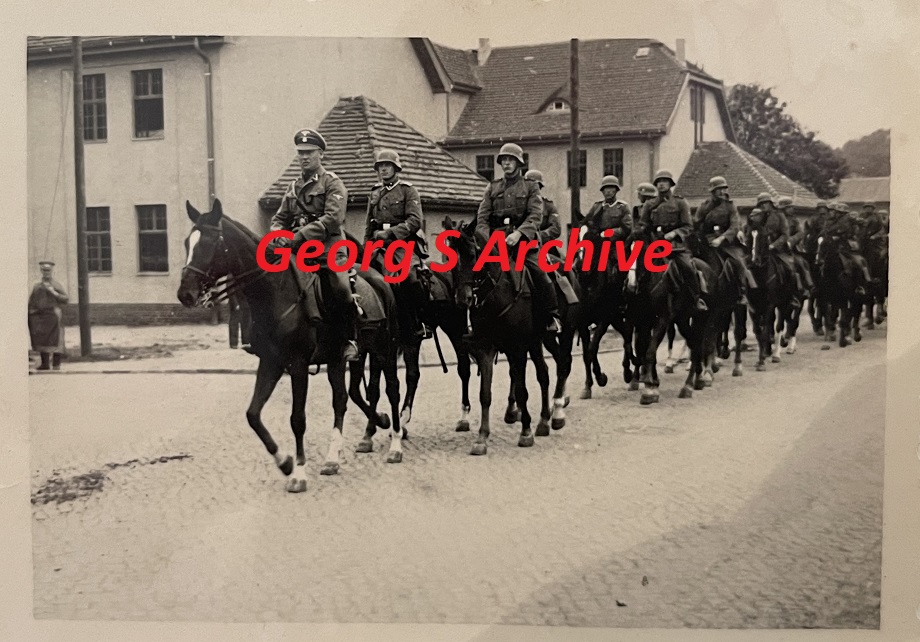
On the night of May 12th to 13th, 1940, the SS-T Division was brought forward as an OKH reserve in the area northeast of Cologne. (p. 85)
If so, then parts of the T-Div. from 10.3. – May 12, 1940 in Arolsen. No further information is available.
December 22, 1939
On December 22nd, 1939, the SS-Pz.Abw.Ers.Kp moved from Ellwangen to Arolsen, to the former location of the II./”Germania” (WV, M. v.Dijken from April 30th, 2006)
In the spring of 1940, the SS-Totenkopf-Panzer-Jäger-Ersatz-Company was moved to the Arols SS accommodation for a few months.
(Bernd Joachim Zimmer, code name Arthur – The concentration camp external command in the SS leader school Arolsen, Verlag Gesamthochschul-bibliothek Kassel, 1994, p. 45)
February 00, 1940
In connection with the formation of the SS-T-Div, on the instructions of the OKH v. October 27, 1939
“1 Inf.Pz.Abw.Ers.Kp. according to KStN 6045 BC 10/1/1937”
as a replacement unit for Pz.Abw.Kompanien of the SS-TIR 1 – 3 of the SS-T-Div. ordered. The designation was SS-T-Pz.Abw.Ers.Kompanie
With orders dated January 9th and January 23rd, 1940, the Army High Command/Chief of Army Armaments and Commander of the Reserve Army approved, among other things, the establishment of this company as the responsible replacement unit for the anti-tank companies of the SS-T.-Infanterie-Regimnter 1 to 3 and of the SS-T.-PzAbw.abteilung.
The formation took place on December 19, 1939 in Prettin on the Elbe, near Torgau, -Lichtenburg under SS-Hstuf. List primarily consists of reservists (members of the police reinforcements). Among them is the later commander of the SS-PzJgAbt 6, Dr. Nestler, who joined the army as a corporal when the war broke out and has now been transferred to the company.
The platoon commander in the company is, among others, the SS-Ostuf. Wolf.
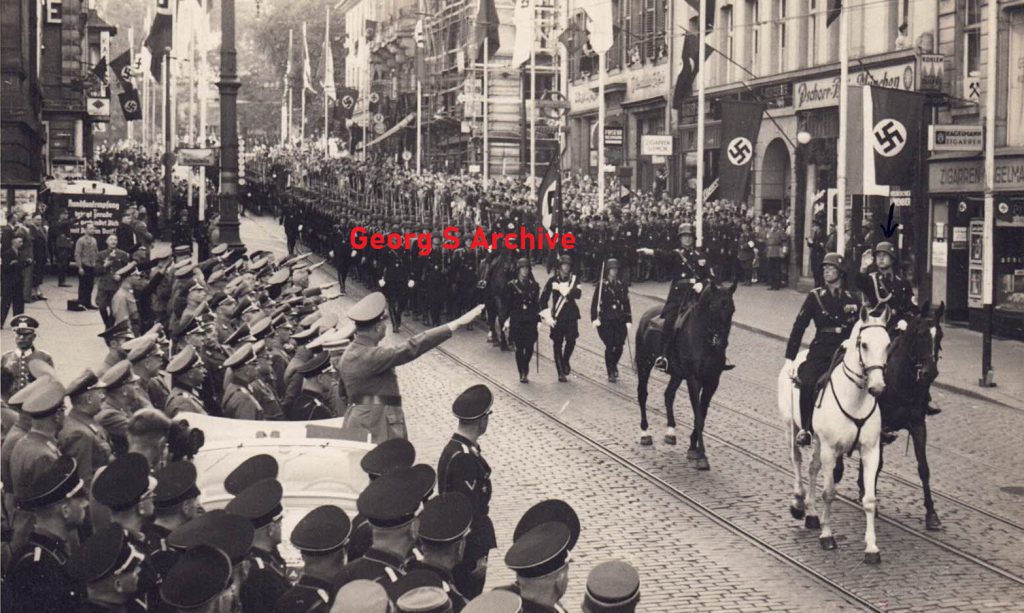
On the instructions of the Army High Command/Chief of Army Armaments and Commander of the Reserve Army from January 31, 1940, an “Inf. Pz.Abw.Ers.Kp (besp.) according to KStN 6047 of January 12, 1940” was ordered as a replacement unit “exclusively” for the police division. The company is formed in Königshütte.
At the turn of the year 1939/1940 there was an Inf.PzAbw.ErsKp. for each division of the Waffen-SS:
a) for the SS-V Division, the company (in Arolsen, SS-Ustuf. Oeck) in Munich-Freimarn, SS-Ostuf.Josef Bäurle
b) for the SS T. Division, the company in Prettin, SS-Hstuf. Cunning
c) for the police division, the company in Königshütte.
In the meantime, the order has been issued to combine the existing PzAbw.Ers.Kompanien of the SS-Verfügungs- and SS-T-Division into an SS-Panzer-Abwehr-substitute department based in Arolsen. This happened with effect from December 22, 1939, but actually only in January 1940.
At the same time, the previous SS-PzAbw.ErsKp./SS-VT, which was already stationed in Arolsen, was renamed “1./SS-PzAbw.-Ers.Kp.” renamed.
(Lt. W. Vopersal: In the course of expanding the department, parts of the 3./SS-Inf.Ers.Btl. “Deutschland” moved from Munich to Arolsen at the beginning of 1940. After the men released from the hospitals were brought in from the PzAbw. units of the SS-VT are formed here under the leadership of SS-Ostuf. Bäuerle the 3./SS-PzAbw.Ers.Abt., according to M.v.Dijken from April 30, 2006 incorrect)
At the beginning of February 1940, an advance party of around 25 men from the SS-T.-PzAbw.ErsKp also arrived. from Prettin in Arolsen. SS-Hstuf follows a little later. List with the rest of his company, which now becomes “2./ SS-PzAbw.ErsAbt”. In part of the official documents, however, this company continued to be referred to as “SS-T-PzAbw.Ers.Kp” until the summer of 1940. and is also listed as such in the strength reports. (WV)
At the beginning of February 1940, in the SS barracks in Arolsen, using the already existing personnel of the SS-T-Inf.Panz.Abw.Ers.Kp. Prettin-Lichtenburg, with the formation of the replacement unit for the Pz.Abw.Kompanien of the SS-TIR 1 – 3 and the SS-T.-PzAbw.Abt of the SS-T-Div. began.
March 15, 1940
Relocation of the Pz.Abwehr-E-Kp. “Germany”, SS Ostuf. Bäuerle, as “3. Pz.Jg.E.Abt” to Arolsen.
Aufstellung der SS-Panzer-Abwehr-Ersatz-Abteilung in Arolsen mit:
Kommandeur: SS-Hstuf.Paul Herms 19.12.39 – 01.02.40
SS-Hstuf.Frimmersdorf 01.02.40 – 01.12.40
(vorher 14.bzw.15 KpGermania”,ab 1.12.40 Kdr.PzJgAbt “Wiking”)
Adjutant: SS-Ustuf. Joachim Balzer (20.03.40)- 01.04.40
SS-Ostuf.Neu 01.04.40 – (21.09.40)
1.Kompanie: SS-Ostuf.Herbert Oeck 24.10.39 -15.08.40
(ab 1.12.40 Chef 3./SS-PzJgAbt “Wiking”)
SS-Ostuf. Landwehr 15.08.40 – 13.12.40
Stabsscharführer: SS-Oscha. Schödel
Zugführer: SS-Oscha. F.A. sp. Ustuf. Albert Buck, SS-Ustuf.Rappl und SS-Ustuf. Balzer
2.Kompanie: SS-Hstuf .List 00.02.40 – 06.05.40
Zugführer: SS-Ostuf.Wolf, SS-Ustuf.Schuster,Oscha.Krause
3.Kompanie: SS-Hstuf.Bäuerle 00.01.40 – 16.10.40
Stabsscharführer: SS-Oscha.Hermann
Zugführer: SS-Ostuf. Krämer, Oscha.Graul und Lauberstein
April 1, 1940
As part of the renaming of all existing anti-tank departments of the German Wehrmacht into “tank hunter departments”, the previous SS-Pz.Abw.ErsAbt Arolsen became the name from March 16, 1940
“SS Panzerjäger Replacement Department”. (WV)
May 31, 1940
Staffing of the SS-PzJg-ErsAbt Arolsen:
Commander: SS-Stubaf. Frimmersdorf
Adjutant: SS-Ustuf. New
Administrative leader: SS-Ostuf. dimensions
Dept. doctor: SS-Ustuf.Philipp
1.PzJg-Ers.Kp.: SS-Ostuf.Oeck (not Landwehr)
First move:
2nd move:
III. Move:
2.PzJg.-ErsKp.: SS-Ostuf. Wolf (not Otto)
1st platoon: SS-Ustuf. Keyck
2nd platoon: SS-Ustuf. Rudat
III Platoon: SS-Oju. Meggl
3.PzJg-ErsKp.: SS-Ostuf. Bäurle
Stabsscharführer: SS-Oscha. Loffelhardt
1st platoon: SS-Ustuf. Cool
2nd platoon: SS-Ustuf. woodpecker
III Platoon: SS-Scharf.Gradl
Each of the existing companies has to train and provide replacements for other field units of the Waffen-SS:
a) the 1st credit for the PzJg departments of the LSSAH and the SS-Verfüg.Div.
b) the 2nd CP. for the 14th companies of the SS-T-Div, the SS-T-PzJgAbt and PzJg companies of the various SS-T-Standarten
c) the 3rd cp. for the PzJg companies of the SS-Verfüg-Division and LSSAH
The men in the individual companies also differ in appearance. While the men of the 1st Kp. on their collar tabs the SS runes that the 2nd Kp. wear the skull and crossbones, the regimental numbers 1, 2 and 3 on the collar tabs indicate that the men belong to the 3rd Kp. to the regiments “Deutschland”, “Germania” and “Der Führer”. The company members of the 3rd Kp who came from the LSSAH. can be recognized by the collar patches with the SS runes.
And something else is noteworthy: While the department as such with the 1st and 3rd Kp. are subject to the official supervision of the inspector of the replacement units when inspecting the SS-VT, the official supervision of the 2nd company as a replacement unit for the SS-T division is exercised by SS-Obergruppenführer Heißmeyer as general inspector of the ext. SS-T standards.
The 3rd Company, SS-Ostuf. Bäurle, as SS-Sturmmann Niederwald reports, is “trained in the old Prussian drill”; That meant a lot of drilling with “tapping handles” and goose-stepping. The company becomes the department’s honorary company and takes part in the public events at the Arolsen location. (WV, M.v.Dijken from April 30, 2006)
SS-Stubaf Karl Frimmersdorf was after the war reported as MIA, but the truth was that the Soviet had executed him.
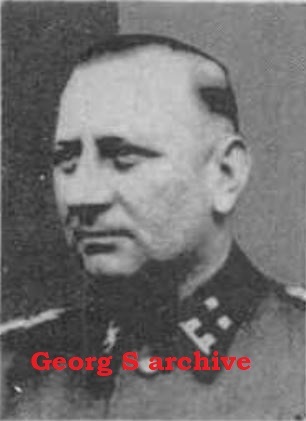
With that we end part 1 of the Story about SS-Standort Arolsen. part 2 is coming soon.
Author Roland Pfeiffer, some images Georg Schwab
SS-Standort Dachau (Part 7 and The end)
1945
January 25, 1945
The founder and long-time commander of the WTL, SS brigade leader and major general of the Waffen-SS Gustav Diesterweg from January 30, 1944, was transferred to the reserve leadership of the Waffen-SS in the SS leadership headquarters and replaced by SS-Standartenführer Albert Doerheit.
January 00, 1945
After the encirclement of Breslau, the “Functional Unterführerschule der Waffen-SS”, which had only been newly established in 1944, was placed under the command of the combat commander and was included in the fighting with the current 7th course of this type, which was to run until the beginning of March 1945.
The time when the school was re-founded in Dachau is not known.
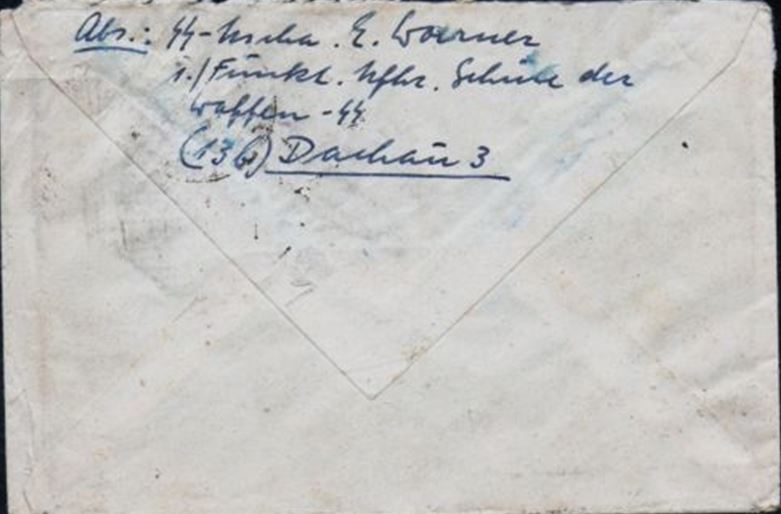
SS field post from SS-Uscha. E. Woerner, 1./Funkt.Uffz.Schule der Waffen-SS 13 b Dachau 3 with postmark April 3, 1945 (imprint “Forwarding prevented by wartime conditions”)
to the Mayor Woerner family in Mühlacker, Württemberg, Hindenburgstr. 51
Dachau, Easter 1945. “Dear parents! First, my warmest Easter greetings. Unfortunately, this time we can’t celebrate it together like we did last year and unfortunately things look completely different this time. But there is still no reason to despair, everything will be fine.
I really hope that you are still doing well, because I haven’t received any mail from you in a long time, and it won’t be the case any time soon.
Hopefully you have received my last letters and….”
So this school existed in Dachau at the beginning of April 1945! Further information is missing so far (June 13, 2018)
February 19, 1945
57.Cooking course a. d. SS training kitchen Dachau 02/19/45 – 03/16/45
March 24, 1945
Action “Leuthen” in WW VII as part of the “Visigoth movement”:
According to the orders of the deputy Gen.Kdo. VII.AK (Wehrkreis-Kdo VII), No. 4952/45 case, Ib/Mob.1, II. Angel. On March 24, 1945, the formation of the “Bavaria Training Division” was ordered.
The Waffen-SS units in World War VII also mobilized as part of the “Gneisenau” call.
(Joachim Brückner, End of the War in Bavaria, individual writings on the military history of the Second World War 30 MGFA, pp. 40-41)
February 19, 1945
57.Cooking course a. d. SS training kitchen Dachau 02/19/45 – 03/16/45
March 24, 1945
Action “Leuthen” in WW VII as part of the “Visigoth movement”:
According to the orders of the deputy Gen.Kdo. VII.AK (Wehrkreis-Kdo VII), No. 4952/45 case, Ib/Mob.1, II. Angel. On March 24, 1945, the formation of the “Bavaria Training Division” was ordered.
The Waffen-SS units in World War VII also mobilized as part of the “Gneisenau” call.
(Joachim Brückner, End of the War in Bavaria, individual writings on the military history of the Second World War 30 MGFA, pp. 40-41)
March 31, 1945
“…the following scan is part of a letter that belongs to the Vilzmann document collection.
I will be happy to introduce this here soon, it recently came into my collection.

My question today:
This letter is from a blocking bag. Widmann, signature is from Captain Widmann, I can read it.
I think I can see the runes in the header.
Now there was an officer named Hans Widmann, who was a first lieutenant in the III./Gren.Rgt. 61 was awarded the German Cross in Gold on December 15, 1944. Vilzmann was also a member of the Gren.Rgt. 61 and this letter goes to the replacement unit 61. So I assume this Widmann is the first lieutenant from GR 61.
My question to you: What’s with this barrier bag? Widmann on himself. What kind of unit was that?
Since “Dachau” is mentioned as the place, I of course looked through the book “The End of the War in Bavaria” by Joachim Brückner – unfortunately without success, as did a Google search.
Can one of you help me?
Greetings – Armin. …” (Armin Rudzki in
https://www.forum-der-wehrmacht.de/index.php?thread/57048-ss-sperr-btl-widmann/
April 17, 1945
As early as April 4, 1945, the head of the WVHA ordered the division of the main office into two groups, “North” and “South”.
(Andreas Schulz, Dieter Zinke, Generals of the Waffen-SS and Police, Volume 4, Biblio, 2009, p.45)
“… On April 14, 1945, Official Group B was relocated to Munich as Group South. However, as a result of the war, we were no longer able to continue working…”
(Andreas Schulz, Dieter Zinke, Generals of the Waffen-SS and Police, Volume 3, Biblio, 2008, p. 51, note 37 as Georg Lörner’s CV dated November 30, 1945, arrived in Dachau on April 17, Georg Lörner and his older brother Johann “Hans” went on excessive drinking bouts, see also p. 44 Johann “Hans” Lörner, SS-Oberführer der Waffen-SS, among others from December 1st, 1942 – May 8th, 1945, head of the Office A I (budget office) in the WVHA)
On April 15, 1945, at around 5 p.m., the majority of the WVHA employees, including the head of the main office, SS Obergruppenführer and General of the Waffen-SS Oswald Pohl, moved to southern Germany. At their own request, employees were also able to stay in Berlin, where SS Oberführer Salpeter took over the remaining members of the WVHA.
Dachau was reached on April 17, 1945, but only the official groups A and B in southern Germany were still in operation.
The approximately 10 employees still at Staff W also went to Dachau under SS Oberführer Hans Baier.
A reconstruction of the SS administration was no longer possible due to the rapid advance of the Allies. Rather, the approximately 50 to 70 employees of Office Group A under SS Brigade Leader Heinz Fanslau and Office Group B, which was reduced to around 70 employees under SS Group Leader and Lieutenant General of the Waffen-SS Georg Lörner, concentrated on preparations for a further evacuation towards Bayrischzell.
The Amt D group, which initially remained in Oranienburg, under SS group leader and Lieutenant General of the Waffen-SS Richard Glücks, managed to maintain contact with the new headquarters of the WVHA thanks to a direct radio connection to KL Dachau. After Oranienburg was evacuated, this connection was completely broken off.
During the week that followed the retreat to southern Germany, Pohl stayed overnight at his wife’s property near Dachau, the Brüningsau estate, where his SS-Hstuf adjutant also stayed. Werner Schiller (* October 7, 2016, Oldenburg) and his OO, Witt, were alive.
(Jan Erik Schulte, Forced labor and extermination. The economic empire of the SS, Schöningh, 2001, pp. 427 – 428, see also (Andreas Schulz, Dieter Zinke, Generals of the Waffen-SS and Police, Volume 4, Biblio, 2009, p. 45, after which Pohl, Fanslau and Georg Lörner came from Berlin with 400 employees to Dachau, where Pohl stayed with 10 men, while the rest continued to “make their way”)
Pohl is said to have occupied a “command post” in the so-called plantation of KL Dachau from April 17th to 23rd, 1945.
(Andreas Schulz, Dieter Zinke, Generals of the Waffen-SS and Police, Volume 4, Biblio, 2009, p. 45)
April 16, 1945
59.Cooking course a. d. SS training kitchen Dachau April 16, 1945 – May 11, 1945
April 18, 1945
In view of the enemy forces advancing ever further into southern Germany, the personnel and courses at the SS Weapons Technical Training Institute (WTL der SS) Dachau were reorganized into combat companies from April 18, 1945.
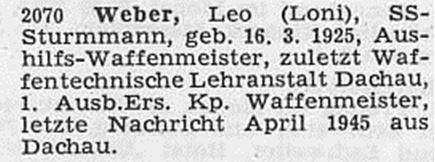
20.04.1945
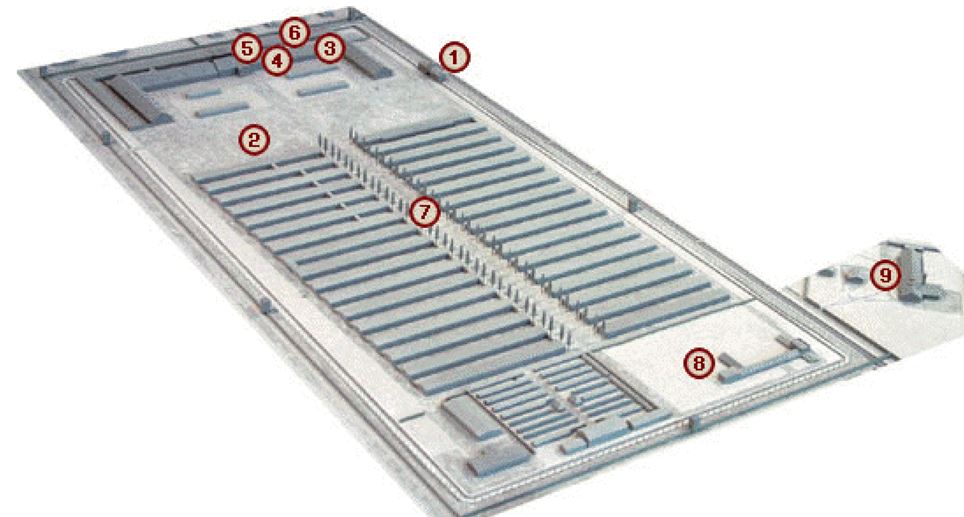
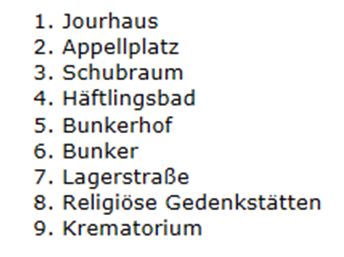
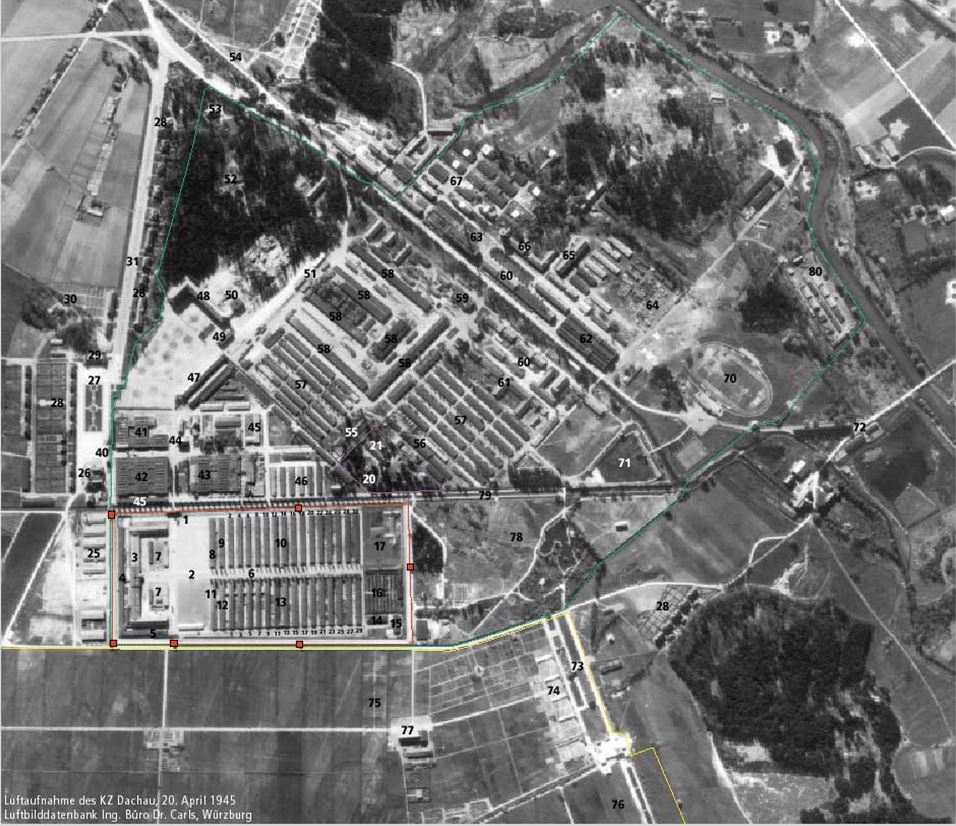
1 Jourhaus mit Lagereingang
2 Appellplatz
3 Wirtschaftsgebäude
4 Bunker
5 Straflager der Waffen-SS und Polizei
6 Lagerstraße
7 Materiallager
8 Lagermuseum, Kantine
9 Arbeitseinsatz, Messerschmitt-Werkstätte
10 Unterkunftsbaracken für Häftlinge (Block 2 – 30)
11 Krankenrevierbaracke A (Ambulanz, Operationssäle)
12 Krankenrevierbaracke B (Schreibstube, SS-Ärzte, Totenkammer)
13 Revier- und Quarantänebaracken (Block 1– 29)
Revierblock 1: Malariaversuche,
Phlegmone-Abteilung
Revierblock 3: Internistische
Abteilung, Malariaversuche
Revierblock 5: TBC-Abteilung,
Höhen- und Unterkühlungsversuche 1942
Revierblock 7: Krankenstuben
Revierblock 9, 11: TBC-Stationen
Revierblock 13 – 29: Quarantäne
14 Block 31: Sonderbaracke (Bordell)
15 Desinfektion
16 Ställe für Angorakaninchen
17 Lagergärtnerei
20 Altes Krematorium
21 Großes Krematorium
25 Werkstätten des Heereszeugamts
26 SS-Gemeinschaftshaus
27 Eickeplatz
28 Wohngebäude für SS-Angehörige
29 Gaststätte, Laden
30 Kommandantenvilla
31 Straße der SS
40 Torhaus / Eingang zum SS-Lager
41 Lagerbäckerei, Lager und Garagen SS-Bekleidungswerke
42 Lager der SS-Bekleidungswerke
43 Werkstätten der Deutschen Ausrüstungs-Werke (DAW)
44 Kommandantur des Konzentrationslagers
45 Politische Abteilung (Gestapo)
46 Baracken-Unterkünfte der KZ-Wachmannschaften
47 Besoldungsstelle der Waffen-SS
48 SS-Kaserne und Verwaltung
49 SS-Standortverwaltung
50 Luftschutzbunker (Hollerith-Bunker)
51 Tankstelle
52 Waldheim, Dienstwohnung SS-Standortkommandant
53 SS-Führerheim (Waldcasino)
54 Standort des Todeszuges bei der Befreiung
55 Hundezwinger
56 Zentralbauleitung der Waffen-SS und Polizei (Baulager)
57 Baracken-Unterkünfte für SS-Mannschaften
58 Garagen
59 (SS-) Porzellanmanufaktur Allach
60 Waffentechnische Lehranstalt der SS
61 SS-Bekleidungswerk/Schneiderei
62 „Holländer“-Halle (Lager und Werkstätten)
63 Fernheizwerk
64 Materiallager
65 SS-Führerschule des Verwaltungsdienstes
66 Reichsführer SS, Abt. „F“ (Dr. Fahrenkamp)
67 SS-Lazarett
70 SS-Sportplatz
71 SS-Schwimmbad
72 Entomologisches Institut
73 Plantage (Kräutergarten) Wirtschaftsgebäude
74 Gewächshäuser
75 Bereich „Freiland I“ der Plantage
76 Bereich „Freiland II“ der Plantage
77 Darregebäude
78 Wildpark
79 Würmkanal
80 Präzifix Werkstätten
April 23, 1945
On April 23, 1945, the head of the WVHA, SS Obergruppenführer and General of the Waffen-SS Oswald Pohl, left his “command post” in Dachau to seek safety from the advancing Allies.
(Jan Erik Schulte, Forced Labor and Extermination. The Economic Empire of the SS, Schöningh, 2001, p. 430)
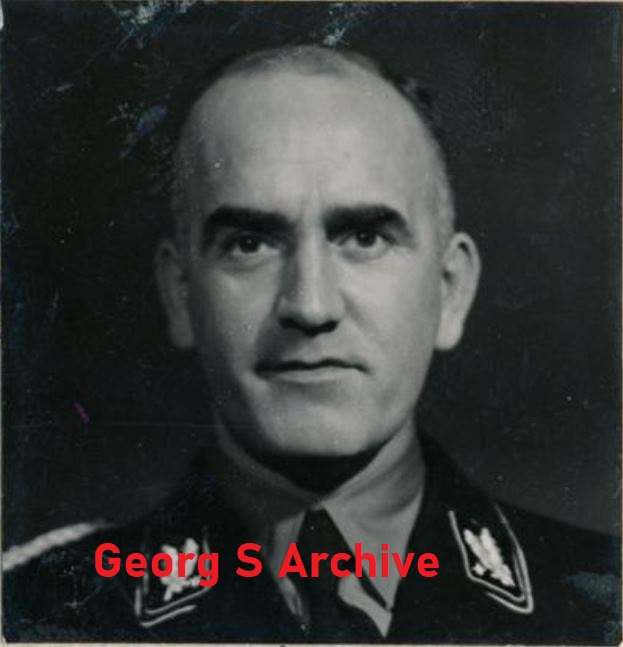
It is not known when the head of Office Group B of the WVHA, SS group leader and Lieutenant General of the Waffen-SS Georg Lörner, left Dachau.
He escaped with members of his staff into the mountains via Schliersee, Bayrischzell and Thiersee, Tyrol.
(Andreas Schulz, Dieter Zinke, Generals of the Waffen-SS and Police, Volume 3, Biblio, 2008, p.
51)
April 26, 1945
When the American troops approached the Munich area on April 26, 1945, additional combat units were put together from the troops stationed in the greater Munich area and the personnel of the offices and other facilities of the Waffen-SS and formed an SS unit with the combat companies of the WTL of the SS. Alarm Regiment “Dachau”, also known as SS Regiment Freimann, summarized.
As far as can be determined, the shutdowns were made by:
- the SS-Totenkopf-Wachsturmbann Dachau
- the Training and Replacement Abbot of the SS Administrative Services Dachau
- the salary office of the Waffen-SS Dachau
- the SS Weapons Technical Training Institute with 1st Inspection, SS-Ostuf. Karl Wolf
2nd inspection, SS-Ostuf Oskar Röntgen - the SS training kitchen in Dachau
- the SS clothing factory in Dachau
- the vocational school of the Waffen-SS Schleißheim (meaning: discharge point of the Waffen-SS
Schleißheim, the vocational school had already been moved to Mittweida, the author.) - Parts of the SS-Flak-AuE-Rgt Munich
- SS Guard Company 7 Munich
- Members of the Waffen-SS from the hospitals in Upper Bavaria
- Dispersed members of the Waffen-SS
- a remnant group from SS-GebJgAuE-Btl 6 Hallein under SS-OJ Hoy
The SS Volkssturm Battalion Augsburg (?, the author, but so WV) was also added, and a unit of SS pupils is also said to have been added to the regiment.
As the American troops approached Munich on their advance from the area north of Augsburg, the discharge center of the Waffen-SS Schleißheim was closed on April 28, 1945.
Parts of the permanent staff as well as members of the “transit company” volunteered for the SS Alarm Regiment Dachau. (see also manuscript WV discharge office of the Waffen-SS)
The commander was the previous commander of the SS Weapons Technical Training Institute, SS-Standartenführer Albert Doerheit.
The staff consisted almost exclusively of Bavarians or Ostmarkers.
According to unconfirmed information, the regiment was divided into two battalions. Individual units assigned to the regiment sometimes operated independently.
Deployed until April 29, 1945 to secure the greater Munich area, including the Isar bridges in Munich itself.
(WV, see also Brückner, End of the War in Bavaria, pp. 199-200, 202, 205, Stöber, XIII.SS-AK, pp. 342, 344)
Operational strength of the units subordinate to the Central Protected Area according to the last available report from the Munich Military District Command, Lieutenant Colonel Hofmann, to the deputy. Gen. Kdo VII of April 26, 1945, Az So., File 13 g – K./Ia: Accordingly, the Wehrmacht (since April 23, 1945 “combat”) commander only commanded one company of the army from the grenadier replacement and Training Battalion 19 with a strength of 4 officers, 23 non-commissioned officers and 144 men. The interpreter company in World War VII was not intended for combat use.
SS units in Freimarn, SS-Flak-AuE-Rgt, and Dachau, WTL of the Waffen-SS, were ready for enemy attacks against the northern outskirts of Munich; their combat strength was less than 1,000 men each.
The Volkssturm and the police could not be deployed as a unit. The seven companies of the Pioneer Replacement and Training Battalion 7 could not be counted on either, as they were divided into blocking squads and were not available as closed units.
(Joachim Brückner, End of the War in Bavaria, individual writings on the military history of the Second World War 30 MGFA, p. 182, BA-MA RW 17/48)
April 27, 1945
Munich was now threatened from the west and north, and Field Marshal Kesselring, as Mayor West, therefore feared that the enemy attacking from the west would push into the rear of the 1st Army via Munich. He therefore ordered a rear barrier to be prepared along the Isar, Amper and Glonn and from Ammersee to Schongau.
Major General Freiherr von Buddenbrock of the XIII.AK (Army) was tasked with exploring and preparing barriers in the Ammersee area and south of it. On April 26, 1945, company-sized units from the Munich area had already been relocated to the Glonn section near Odelzhausen – Sulzemoos and near Petershausen, Markt Indersdorf.
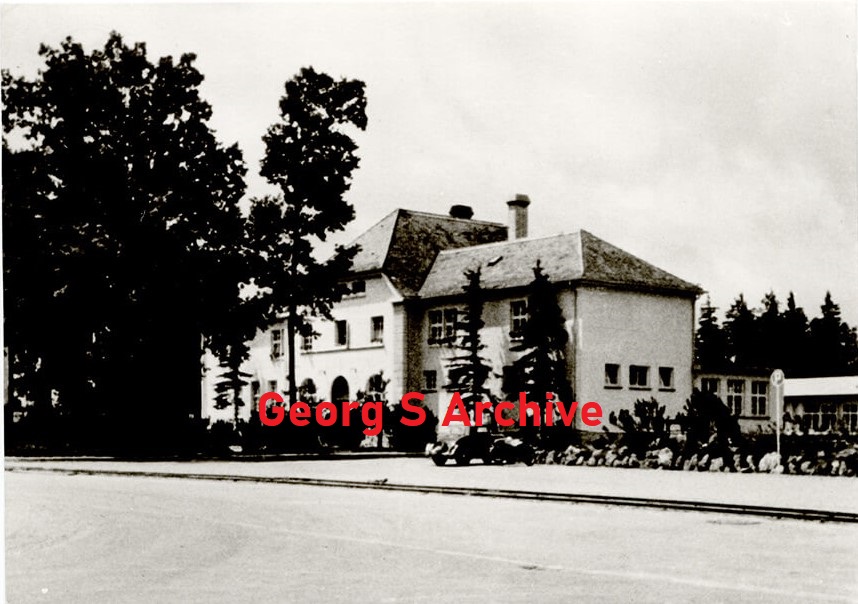
These were in each case the companies of the Weapons Technical Training Institute of the Waffen-SS, which belonged to the “Mitte Protected Area”. (Daily report from the Mitte protected area to the Deputy Gen.Kdo VII.AK from April 26th and 27th, 1945, BA-MA RW 17/46)
Explorations for such an operation had been taking place for a long time, because the greater Munich area with its Isar crossings north and south of the city could only be defended here, if at all.
(Joachim Brückner, End of the War in Bavaria, individual writings on the military history of the Second World War 30 MGFA, p. 181)
A first deployment of parts of the SS-Alarm-Rgt. Dachau, including a combat company of the WTL of the SS, took place on April 27th/28th, 1945 when suppressing a prisoner uprising in KL Dachau. (WV)
April 28, 1945
Deployment of parts of the Dachau Regiment, including SS-Wachkompanie 7 and combat groups of the SS-Flak-AuE-Rgt, against the “Bavarian Freedom Action”
April 29, 1945
On the night of April 29, 1945, the units of the KGr. von Hobe and the 2nd Geb Div moved behind the Amper and Glonn sections and again took up a front, the KGr. from Hobe on the Glonn section between Arnbach and the Augsburg-Munich motorway, on both sides of Freising behind the Amper section were the 352.VGD and the 2.GebDiv.
The 2nd GebDiv had to go on April 29th. Give up Freising and retreat behind the Isar. Into the front gap to the KGr. From Hobe, the 20th US PD pushed along State Road 13 to Schleissheim Airfield. Further west, the 42nd and 45th US ID reached KL Dachau around 1:00 p.m.
The camp was evacuated on April 26, 1945 by 7,000 prisoners, who over the next few days were driven in a miserable procession via Gauting, Percha to Waakirchen near Tölz. In the camp itself there were indescribable conditions. It was completely overcrowded with 30,000 prisoners who had been transferred here from other camps in recent weeks. Diseases had spread. Because of the international importance of this camp, the American armed forces had commissioned the Deputy Div.Kdr of the 42nd US ID, Brigadier General Linden, to take over the camp.
The handover was carried out by the head of the International Prisoners’ Committee, the Belgian Albert Guerisse, and on the German military side by a young first lieutenant who had recently been transferred to the Waffen-SS and had been in charge of camp management for a few days.
The American soldiers’ shock at the conditions in the camp was expressed in a massacre immediately after the handover: all SS guards were shot, including the first lieutenant who had just handed over the camp.
An eyewitness stated that the long-standing security personnel were constantly being replaced. After the partial evacuation in the final phase of the camp, young recruits from the Waffen-SS were then deployed to guard it. They atone for the guilt of others. In this context, the After Action Report of the 7th US Army speaks of 300 SS men shot.
The advance of the 42nd US ID to Dachau also tore the KGr apart. from Hobe, which tried to fight back on both sides of the Aichach – Dachau road. An SS regiment deployed north of Dachau was assigned to the KGr. Although now assumed, Hobe’s staff could no longer influence its management due to the interim capture of KL Dachau. The SS regiment was taken back to Freimann.
(Joachim Brückner, End of the War in Bavaria, individual writings on the military history of the Second World War 30 MGFA, pp. 192, 196, 198 – 200)
The SS Alarm Rgt. On April 29, 1945 (?), Dachau took up a defensive position north of Munich on the Glonn, including parts of the SS WTL, and on both sides of the Reichsautobahn Augsburg – Munich on the Lauterbach – Markt Indersdorf line. The command post was initially located in the SS troop camp at Dachau. (WV)
The SS regiment in KL Dachau was supposed to close a gap of 10 km to the right of the 212.VGD, south of Munich.
Instead, the Rgt. was deployed north of Munich, hard north of Dachau, and the KGr. assumed by Hobe. Rgts staff in KL Dachau was already deployed north of the Amper. The regiment, which then fought its way back to Freimann, prevented the Americans from advancing quickly toward Munich.
An SS battalion set up at short notice in Augsburg under SS-Hauptsturmführer Freiherr von Truchsess, which was to be added to the regiment, took up field positions near Webling and was engaged in defensive combat around midday on April 29, 1945. SS-Hstuf. von Truchsess and parts of his battalion were taken prisoner by the Americans in Webling and were subsequently killed along with 43 other members of the Waffen-SS.
(Günther, 17.SS, Vol. III, p. 405 – 406 SS-Hstuf. Heinrich Frhr.v. Truchseß, * 6. 4.02, SS-No. 14 962, 5.41 Ostuf. i. Kav.Rgt.2, 6.44 Hstuf. u. z.b.V., SS-Flak-Abt.9, † 29. 4.45)
The 212.VGD had left the Dachau area without orders from the XIII. SS A.K. Withdrew to Forstenrieder Park and came into the command area of the XIII. A.K. (Army).
The then O1 of the division Gottfried Pfeiffer reported on the background:
“… In the Dachau area we found ourselves in a “situation” that I would like to describe in particular detail because the behavior of my division was obviously not understood.
Our division stood north of Dachau without an enemy in front of the front in the north. Explorations to the left and right led to enemy contact.
Major Reinwald had a confrontation with an SS leader who was citing an order from Himmler that there should be no fighting in the Dachau area.
another tried to take our transport kit. (Capt. Kälble) to assume
others again the reconnaissance train.
At a train station north of Dachau we met the first Air Force members with “discharge papers” (!).
This was the situation when, dead tired, I arrived at the Div. Staff, where Gen. Ulich was desperately trying to establish contact with the XIII. SS A.K. to obtain…
After assessing the situation for several hours, Gen. Ulich made the decision to lead the division into Forstenrieder Park because, according to the unanimous opinion of all officers present, especially the Div.-Adj. Geyer, there was no longer any defense at Dachau. The division was urgently moved west of Munich.
The dramatic hours north of Dachau were more than turbulent… The unanimous verdict: This should be reported to the SS officer. released from the Dachau camp…
I think I can say from memory that the division “in the park” didn’t wait 24 hours for a new mission. All the more disappointing is the sudden news that Gen. Ulich will have to answer to a court-martial…”
(Erich Spiwoks, Hans Stöber, final battle between the Moselle and Inn, Munin, 1976, pp. 333 – 334, see also Keilig, General of the Army, p. 351 Max Ulich, born March 25, 1896, RK and DKiG, 1.12.44 Gen .Maj,, 1.4.44 – 31.3.45 Chief Gen.St. Deputy VII. A.K., 1.4.45 212.I.D., survived the war, then lived in Munich)
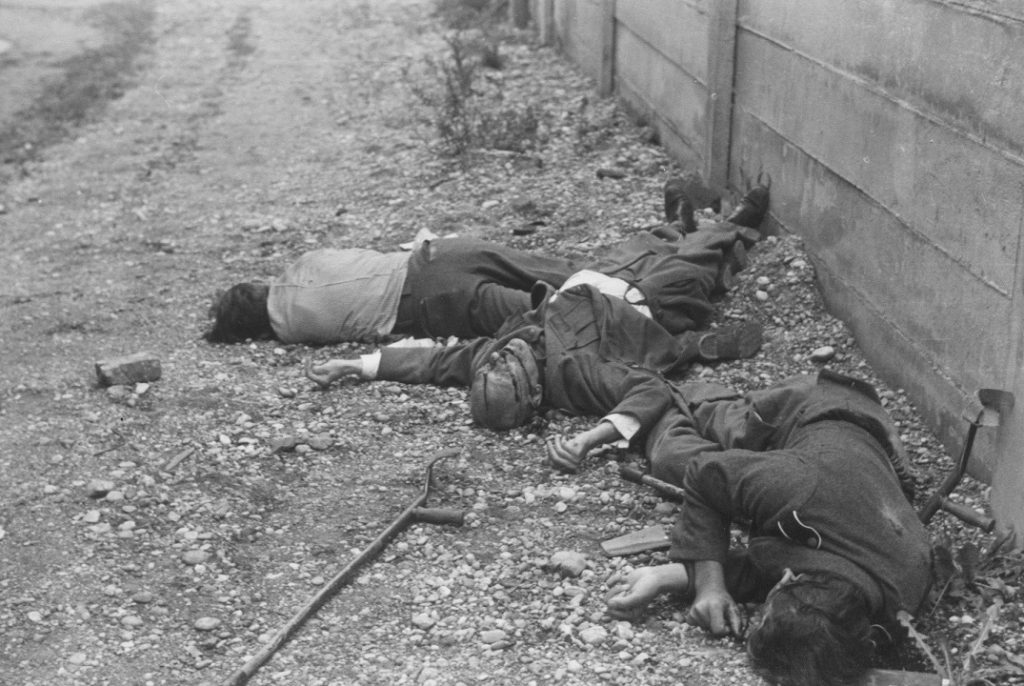
On April 29, 1945, the SS hospital in Dachau was handed over by the head doctor, SS-Sturmbannführer Dr. med. Schröder (possibly also Schroeter?), to the American troops who occupied Dachau.
After the proper handover, numerous seriously wounded people and members of the hospital staff were shot indiscriminately by the American soldiers.
(BA-MA N 756 Wolfgang Vopersal, SS-Lazarett Dachau, undated, 2 pages, here p.1 and 2 above)
Schroeter, Erwin Dr. Hstuf. 26. 6.07 401 306 SS hospital Dachau 11.44
Hstuf. Danzig SS-FHA 5.44
Unfortunately, there is no map in the chronicle of the 42nd US Division that shows the division’s route to Dachau or Munich.
It is mentioned in the chronicle that at 05:00 on April 29, regimental combat groups were formed to accelerate the division’s advance, and at 06:35 the motorized II./US-IR 222 followed behind the tanks (the 20th US- Pz.Div., the author) towards Munich, the I./222 followed the II. Btl. while the III. Btl. combed the regimental section and dug out isolated pockets of resistance.
It was similar with the US-IR 242, the III. Btl. was motorized, the I. Btl. followed the III. and the II. Btl. took care of the Rgts. section.
The US-IR 232 followed the CCA of the 20th US Pz.Div. and then entered the reserve of the XV in a meeting room. Corps.
At 1 p.m. the II./US-IR 222 reached Dachau, but only a small group of officers from the US-IR 222 and men under Brigadier-General Linden went to the camp.
According to the chronicle, the Dachau camp was handed over by a representative of the Swiss Red Cross. “A young German (first) lieutenant (in the original just “Luitennant”), who had been brought to this camp from the Eastern Front just two days earlier, “surrendered it” to the general.”
Then the II Btl. advanced and wiped out the SS guards, who refused to surrender and opened sniper fire on the advancing Americans.
After clearing the camp, the II./US-IR 222 continued its advance to the Amper and towards Munich.
The US-IR242, which traveled over the highway, also reached the Amper by the evening of April 29, 1945.
Management of KL Dachau, among others
SS Obersturmbannführer Martin Weiss
SS-Obersturmbannführer Eduard Weiter – April 26, 1945
(Rolf Michaelis, The Waffen-SS. Myth and Reality. Documentation about the personnel composition and deployment of the Waffen-SS, Berlin, 2006, p. 328)
Letter from the head of the security police and the SD – IV – g.Rs., v. April 5, 1945 to the commander of KL Dachau, SS-Obersturmbannführer Next – Personal
(Topography of Horror Foundation, Berlin, 2010. P. 110 from PS Best, The Venlo Incident, 1951)
SS Ostubaf. Martin Weiß, “Amtschef z.b.V.” in Office Group D of the SS-WVHA since May 18, 1944, was in Dachau again at the end of April 1945, possibly to relieve the camp commandant Eduard Weiter and to eliminate grievances.
On April 28, 1945, he discussed the handover of the camp to the US Army with SS-Standartenführer Kurt Becher.
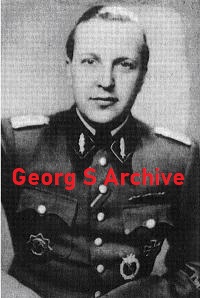
On April 28th or 29th, 1945, Weiß left Dachau. On May 2, 1945 he was captured by American troops in Mühldorf am Inn.
https://de.wikipedia.org/wiki/Martin_Gottfried_Wei%C3%9F
The SS-Standartenführer (since January 1, 1945) Kurt Becher was appointed “Reich Special Commissioner for all concentration camps” on April 9, 1945.
It is not known how long he stayed in Dachau; he was arrested by American military authorities in Nuremberg in May 1945.
He is said to have been in Bergen-Belsen on April 10, 1945, until he arrived in Mauthausen on May 5, 1945. Becher and some of his staff hid in Weißenbach (north of Altausee?) until he was arrested by the Americans on May 12, 1945.
(Karla Müller-Tupath, Reichsführer’s most obedient cup. A German career, Konkret Literatur Verlag, 1982, pp. 121 – 122, in Weißenbach were:
Kurt Becher, born September 12, 1909 Hamburg,
SS-Ostuf. Karl Grabau, born October 10, 1911 Hamburg
SS-Ostuf. Josef Weber, born September 25, 1911 Bodenbach/Elbe and their driver
Kurt Helfer, born November 1, 1919 Rielasingen/Baden
SS Oscha. Emil Wolff, born September 18, 1909 Sternbeck/Krs. Oberbarnim, “Reservists of the Waffen-SS”)
Grabau, Karl, born on October 10, 1911, in Harburg, head of the SS site administration in Radom June 42-June 43, SS Obersturmführer. SS no. 228 822?
Camp management: Martin Weiß from April 26 to April 28, 1945, Johannes Otto on April 28, 1945, and Heinrich Wicker on April 28 and 29, 1945. The handover to the American troops was carried out by the 23-year-old SS-Untersturmführer Heinrich Wicker
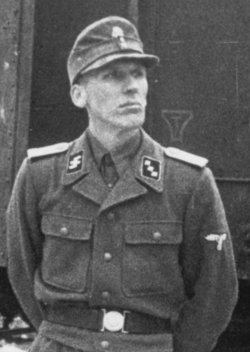
Otto, Johannes Ostuf. 12/24/06 292 442 SS-WVHA Amtgr. D 8.43
Ustuf. Oederan SS-WVHA Amtgr. D 1.42
The former prisoner Edgar Kupfer-Koberwitz also remembered April 29, 1945 in his Dachau diaries: “… Suddenly the news: There are white flags on the towers! Everyone is delighted, which can only mean that the camp has surrendered. I don’t believe it myself, I think it’s just to make the boundaries of the camp clear, and there’s still the SS on the towers, there are supposed to be 200 SS men still in the camp.
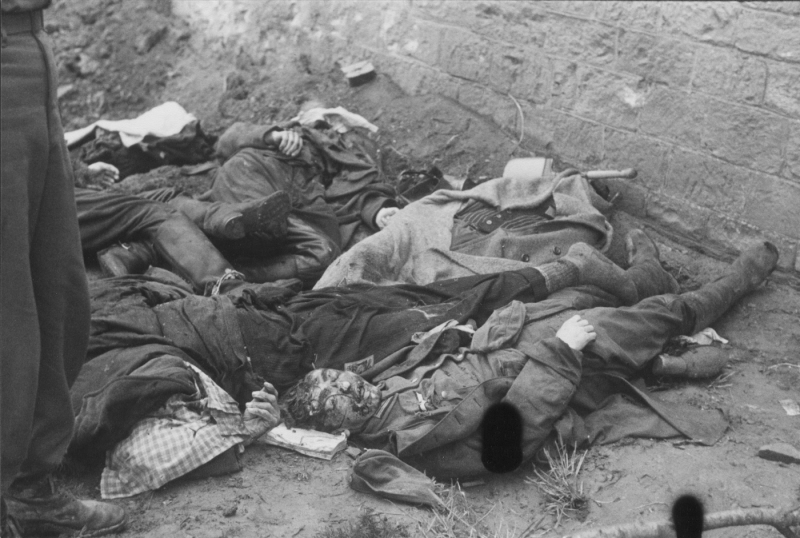
Suddenly outside there is shouting, running, running: The Americans are in the camp, yes, yes, they are at the roll call area! Everything starts moving, the sick leave their beds, the almost healthy and the staff run onto the block…
Comrades come, come back, talk breathlessly: The Americans on the roll call square! They shoot down all the SS. The camp is taken, we are free, free!
The Americans ordered the guards to climb down from the towers and come out of the bunkers… Everyone was shot, the Americans didn’t leave any of the SS men who fell into their hands alive. A comrade who saw this then told me what he felt, because it horrified him to see how people were shot down despite their hands raised, falling, bleeding and dying moaning…
The dead SS men are now lying everywhere in the camp area…. Some… take away the wristwatches, cameras and even the boots from the dead SS…
I’ve just heard that agitated prisoners snatched the submachine guns out of the hands of the US soldiers and shot the SS men, their hands raised to me as they stood behind the electric wire fence. Many comrades were outraged about this…
It was a beautiful and yet such a bloody Sunday. Strange how everything comes full circle the way it began. It all started bloodily and ended bloodily

After the capitulation, Jost W. Schneider came from the Rottach-Egern camp via Berchtesgaden and the Oberpfaffenhofen airfield work detail to the Dachau camp and Bunker I around August or September 1945. In this context, he remembered that “… as a German doctor Stubaf./Ostubaf. Dr. Fierlings,
Fierlings, Paul Dr Stubaf. 18. 3.05 308 833 IVb,Pz.GR.95 4.45
Stubaf. Düsseldorf IVb,II./Art.Rgt.6 4.44
At that time he was, in my opinion, a bad assistant to the Americans…”.
“… out of the bunker, in the hospital, i.e. H. Around spring/summer 1946, I saw the “defense line” north of the camp complex, built-in Panzer III and IV cupolas at various work detachments, all of which were installed in the direction of Amper and Moor. These things were no longer fired, as several prisoners assured me.
In the warehouse itself from April 28th. Numerous prisoners armed themselves with the weapons they had from Staf. Dryness
Doerheit, Albert Staf. 20. 9.94 44 483 SS-WTL 1.45
Ostubaf. Blocks Kdr. Landstorm Nederland 4.44
Ostubaf. Kdr.Nachsch.9 2.44
Stubaf. Kdr.T.I.R.15 6.40
W.T.L. (Weapons Technical Training Institute, the author) had to repair them and tore them out from under the wooden floors of the barracks. Since the permanent staff had been piled up and moved with transports, the camp towers were mostly occupied by disabled people from the location area. These guards were attacked when the Americans approached and mostly killed; only a small number survived through the intervention of sensible prisoners.
Around 15 – 25 Waffen-SS (members) of all ranks were also murdered at the district heating plant in the on-site storage area, some of them animalistic (1 picture in my archive, not available, the author.)
The conditions up to 1947 and beyond were described to me by the camp priest Leo Roth, a Dominican priest who was (allegedly) imprisoned because of Section 175, who remained in the camp area after the liberation and took over pastoral care for the Waffen-SS. He knew a lot and gradually it became a pleasure to discuss with him. He, whose work had not yet been sufficiently appreciated, made himself unpopular with his superiors through his support of the Waffen-SS, even though Auxiliary Bishop Neuhäusler himself consecrated the chapel in the KL area on Christmas 45 (or 46?). Roth gave such a clear speech against collective guilt at the CIE-Langwasser that he had to go into claustry somewhere in South Tyrol for months. …Roth helped bring the truth to light despite the Dachau KL Museum: that PoWs had to build the “oven” in the crematorium long after the camp had been liberated (at which pot-bellied French ex-prisoners celebrated their “les rescapees de Dachau”) with bronze … (unles.)) – as well as the fact that the shower bath was just a bath and never a gas chamber.
In the 1960s he was “caught” again; one day his body was found on a relatively harmless rock face in the Dolomites. His end, like many things in his troubled life, remained mysterious. …”
(Jost W. Schneider, regarding question 309 a the JS Tölz in June 1945 – DF 1/1975, another memory of the Junker school, January 1975, BA-MA N 756, 2 pages, pp. 1 – 2 middle to Wolfgang Vopersal dated January 26, 1975)
https://de.wikipedia.org/wiki/Leonhard_Roth_(cleric)
With that we close the story about the SS-Standort Dachau. I hope you all have found it interessting. The SS-Standort Dachau is so big all of those departments and units can be devided in more detailed stories. One of them that I will publish a story about is the last Officer of KL Dachau – SS-Ustuf Heinrich Wicker. But more about that later. Thank you Roland for a very interesting story.
Georg Schwab
Author Roland Pfeiffer, some images Georg Schwab
SS-Standort Dachau (part 6)
1942
At the shooting range of SS-Standort Dachau you had the range at “Herbertshausen”, it´s 2 kilometers away north from the main camp. On this place the SS beside shooting practice conducted a war crime when they executed a lot of Russian POW´s there. the exact number is unknown. But we can count them in thousand. This kind of executions took place at several SS-Standorten such as Sachsenhausen, Buchenwald and other places. At Sachsenhausen they had a facility where the POW was supposed to get a medical check, and when they was telling him that they needed to measure his hight the POW took place by the wall, behind the wall an SS-Soldier stood ready with a gun. He opened a hatch a shot the POW in the back of the head. One of them was the so Called “pistolen schubert”.
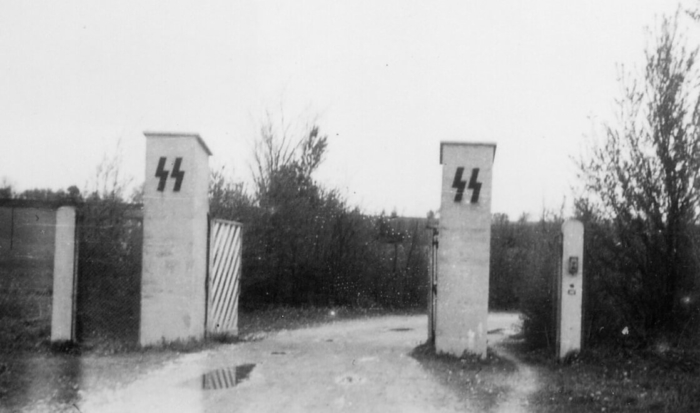
The new Kommandant of the camp was in 1942 SS-Ostubaf Martin Weiss, who came from KL Neuengamme.
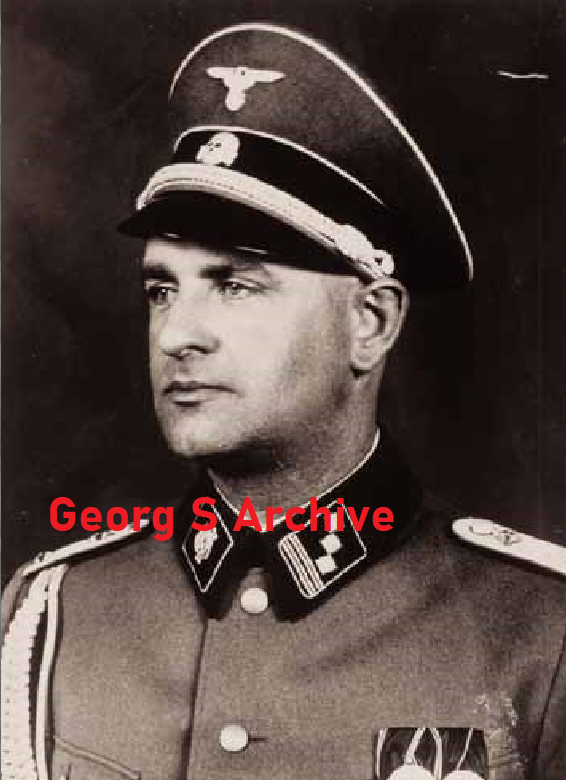
April 00, 1942
The Dachau SS Medical School, which was attached to the Dachau SS Hospital until 1942, was apparently closed in April 1942. Unfortunately, no further information is available on this, nor on the continued use of school staff.
(BA-MA N 756 Wolfgang Vopersal, SS Hospital Dachau, n.d., 2 pages, here p.1, see also BA-MA N 756 Wolfgang Vopersal, SS Medical School Dachau, n.d., 2 pages, here p.1)
However, the school reopened in December 1942 (field post receipt). Unfortunately (June 13, 2018), details are not known.
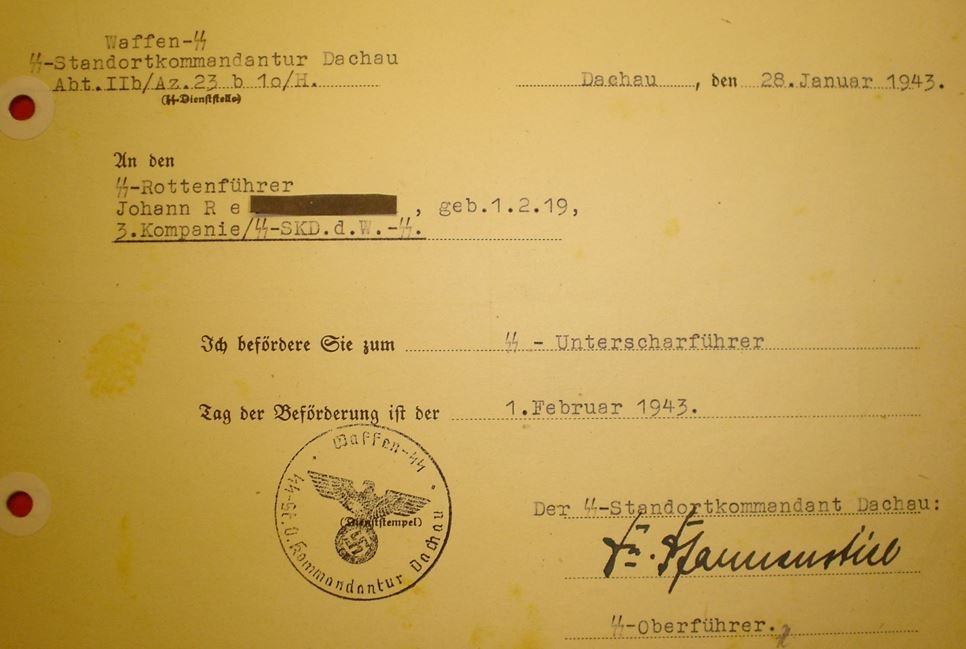
SS-Standortkommandant Dachau, 28.1.1943 SS-Oberführer Pfannenstiel
With effect from November 1, 1943, an SS regular company, e.g. V., was set up in Dachau. ordered.
- General:
a) The SS main company e.g.b.V. receives the designation
SS Stamm-Company e.g.V.
(SS Stammkp e.g. V.)
b) Leader of the SS Stamm-Kp. e.g.V.: SS-Hauptsturmführer Harms
He receives disciplinary powers according to DBO (mob) § 9.
c) The SS Stamm-Kp. e.g.V. reports directly to the SS Main Command Office. She works closely with Amt A II, Org.Abt. IE, instructed. Economically, the company is assigned to the SS location administration in Dachau.
d) Responsible for the formation of the SS Stamm-Kp. e.g.V. is SS-Hauptsturmführer Harms.
The completed list is sent to the SS-FHA, Org.Abt. Yes to report.
e) Postal address: SS-Stamm-Kp. e.g.V. Dachau 3/0 SS barracks.
2.) Structure:
A KStN does not apply to filling positions
3.) Personnel regulations:
Permanent staff are to be assigned by
SS-FHA Office V/IIa: 1 leader (seriously injured) as representative of the Kp. leader
1 guide for Abbot VI
SS-FHA Office II Org. Abt. IE: 1 staff sergeant
Additional permanent and training personnel will be formed into the SS-Stamm-Kp upon request by the SS-FHA, Org.Abt.IE. e.g.V. offset.
4.) Material provisions:
a) Weapons (for teaching purposes only) and training equipment will be provided upon request by SS-FHA, Org.Abt. Ib, assigned.
b) 2 le. Draft horses are to be assigned by SS-FHA, Office VI, the necessary harness equipment and 1 tow truck by SS-FHA, Office VII. takeover or The transfer must be made by mutual agreement.
c) Sports equipment, office supplies and equipment must be requested from SS-FHA.
d) Teaching materials are allocated upon request by SS-FHA, Regulations and Teaching Materials Department.
5.) Accommodation
First of all, accommodation with appropriate classrooms for 1,000 men must be provided by the SS Dachau location administration.
6.) Medical care is provided by the Dachau SS hospital.
7.) Tasks of the SS Stamm-Kp. e.g.V. are set out in a service instruction that is sent to the departments requiring cooperation. (not available, the author)
F.d.R. signed Hoffmann signed, Jü t t n e r
SS-Hauptsturmführer SS-Obergruppenführer and General of the Waffen-SS
(Copy from BA Berlin NS 19/ 1885 B.Arch.Kelling, provided to Uwe Kleinert 3.2008)
The formation of this company to record seriously injured members of the Waffen-SS was not only met with approval. Especially the head of the SS main office, the SS Obergruppenführer and general of the Waffen-SS Gottlob Berger, who only with effect from September 1, 1943, the SS convalescent battalion, the previous collection point for the troops’ war disabled people from the main welfare and supply office – SS had taken over the SS Main Office, saw this formation of the SS Main Office as a “competing company”.
Already in a letter dated October 29, 1943 to the Personal Staff of the Reichsführer-SS, SS-Obersturmbannführer Dr. Rudolf Brandt, CdSSHA/Be./We., VS-Tgb.No. 6768/43 case, Adjtr-Tgb.No. 3357/43, Berger explained: “Dear doctor!
It is unbearable for me to receive 1 or 2 things every day in which the orders or decisions given by the Reichsführer-SS are deliberately attacked. The matter is unbearable because I am certain that in the end I am the one who suffers, because a decision will either not be made or will be made in favor of the SS Headquarters. I’m tired of this now, and finally.
The Reichsführer-SS must intervene here and also point out to SS-Obergruppenführer Jüttner that he has to stick to the given orders and not constantly try – together with SS-Brigadeführer Dr. Haertel (the head of the main welfare and pension office SS, the author) – to sabotage the work. I am firmly convinced that the SS Stamm Company, for example, – which is what we are talking about here – is a competing company and so the uniformity is to be thwarted again.
It’s all pointless, and it would be best if my main office were to close down. What else should I do here? I have a big job to do at the front, but here at home I have to worry myself to death about things like this.
Letters arrive here every day. I submit today’s one to you. There are often up to 10 people who provide shocking evidence of how neither the main welfare and pension office nor the main management office did anything for the seriously injured. Now, after I took the matter into my own hands (taking over the SS-Gesenden-Btl., the author), you suddenly remember these things, and since you have all the technical and material possibilities, you can achieve this .
Dear doctor! You can say whatever you want this time. I’m too good to play the buffoon. Heil Hitler you…!”
(Copy from BA Berlin NS 19/ 1885 B.Arch.Kelling, provided to Uwe Kleinert 3.2008)
By March 1944 the SS Stamm-Kompanie z.b.V. For unknown reasons, probably due to lack of space, and at a previously unknown date, it had already been moved from Dachau to the SS “Germania” barracks in Hamburg-Langenhorn.
On March 23, 1944, the SS Obergruppenführer and General of the Waffen-SS Berger, CdSSHA/Be./We., wrote VS-Tgb.Nr. 211/44 g.Kdos, Adjtr.-Tgb.No. 193/44 g., again to the Personal Staff Reichsführer-SS, SS-Obersturmbannführer Dr. Rudolf Brandt, “Subject: SS Stamm-Kompanie z.b.V., Appendix: 1 process”: “Dear Doctor!
The Reichsführer-SS has ordered that I send you the report from my Office C III with all the appendices. In my opinion it is clear that this SS main company, for example, The SS Command Main Office has created a sieve through which only severely injured SS men who are no longer fit for action can get into the convalescent battalion.
“Hail Hitler, you…”
(Copy from BA Berlin NS 19/ 1885 B.Arch.Kelling, provided by Uwe Kleinert
1944
January 00, 1944
Relocation of the SS Leader School of the Administrative Service to Arolsen. (SS-Verwaltung Shule der SS)
In mid-November 1943, an SS advance commando from Dachau sounded out the SS barracks of the 2nd Battalion of the SS Regiment “Germania” on Große Allee in Arolsen, which had been empty after the SS Anti-Aircraft Training and Replacement Regiment had been relocated to Munich-Freimarn for accommodation options at an SS leadership school in the barracks. (Zimmer, Deckn.Arthur, p. 51)
On November 14, 1943, a transport list was compiled in the Buchenwald concentration camp, which included 11 German, 12 Polish, 7 Czech, 2 Luxembourgish prisoners as well as 1 Belgian and 1 Dutch prisoner, which was intended for the newly established external command at the SS leader school in Arolsen were. The prisoner Willy Apel was employed as a prisoner capo and reported after the war: “The SS leader school used to be in Dachau and was moved to Arolsen. Buchenwald then had to provide a work detail. … We were all loaded into a car, onto a truck with appropriate security, and drove off. … We had no idea where Arolsen was and what we would encounter. …” (Zimmer, Deckn.Arthur, p. 51, note 4 interview by B.Zimemr with W. Apel from October 23, 1987).
The Polish prisoner Ludwik Majka remembered the transport: “… In the afternoon our group – around 40 prisoners – was picked up by a truck type “Holzgas” with a tarpaulin. … The group of prisoners was guarded by six SS men – Croats in German uniform – who were sitting at the car door, the driver – a German – and the command leader sitting next to him. … We arrived in Arolsen on the same day between 9 and 10 p.m. The first few nights we slept on straw bags spread out between machines. …”
(Zimmer, Deckn.Arthur, p. 75, note 2, report from L. Majka to B. Zimmer)
For Arolsen… when putting together the transport of November 14, 1943, it had to be taken into account that it was an external commando within an SS barracks, so particular caution was required when selecting the prisoners. The profession was an important criterion.
According to the personnel file, ten of them were cooks, waiters or butchers, i.e. they practiced jobs that were urgently needed in the newly established SS leader school. The others had relative qualifications primarily for construction work, and only in three cases was no craft occupation listed: clerk, tax official, businessman. (Zimmer, Deckn.Arthur, p. 52)
The majority of staff and teachers at the SS Leader School of the Arolsen Economic and Administrative Service came from the SS barracks in Dachau, which was located directly next to the concentration camp, separated only by a narrow river.
Some prisoners were already assigned to work here, for example in the kitchen and in workshops. In the course of the relocation of the SS administration school or its expansion into the SS leader school of the economic administration service, in addition to the SS personnel, some prisoners from the concentration camp in Dachau also came to the SS barracks in Arolsen.
Former Dachau prisoner Bodgan Wozniak, who worked in the kitchen of the school in Dachau, recalled: “… Only a few people worked in the kitchen – about 14 in total. My boss’s name is K., an ethnic German from Tomaszow-Mazowiecki. … The boss among the waiters was called W., the head of administration was Wr. I also remember the accountant’s appearance. He was slim and had straight hair. … Our departure took place on December 23, 1943. … We took the train to Arolsen under the supervision of two older security guards. …” 9 men on the transport were German, 11 were Poles, 3 were Yugoslavs, 2 were French and 1 was Belgian. A total of 26 prisoners from KL Dachau were transferred to the Arolsen external command and, for administrative reasons, were formally transferred to KL Buchenwald on December 27, 1943.
Here, too, these were mainly craftsmen who were needed in Arolsen for work in the kitchen and workshops. In the monthly calculation for January 1944 for the Arolsen external command, the arrival of the Dachau transport was noted for January 7, 1944; the number of prisoners increased from 34 to 60. With a transport of a further 12 Poles and 6 Russians, the strength of the prisoner command in the SS barracks, together with the 20 prisoners from the Arolsen SS clothing camp, reached 98 male prisoners.
(Zimmer, Deckn.Arthur, pp. 101 – 103, Fig. 3.22, 142, for further development see also pp. 142-156)
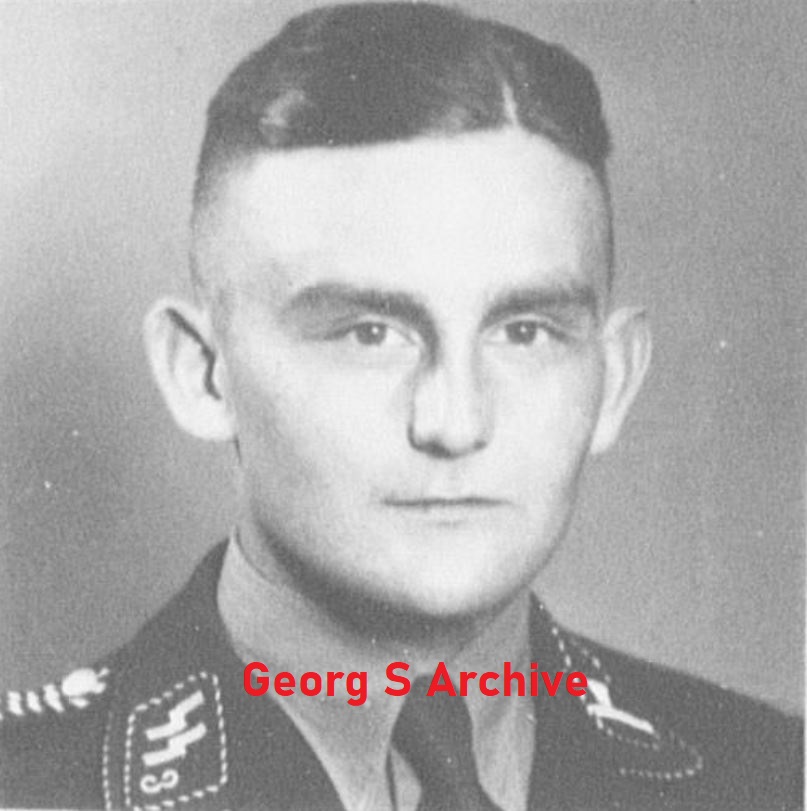
In January 1944 the school moved to Arolsen. Almost at the same time, in February 1944, it also received a new commander, SS-Oberführer Georg Bochmann, who was supposed to take over the school with effect from November 1, 1943, but whose transfer had been canceled at the time.
(Jan Erik Schulte, Forced Labor and Extermination, The Economic Empire of the SS – Oswald Pohl and the SS Economic Administrative Main Office 1933 – 1945, Schöningh-Verlag, Paderborn, 2001, 68)
In 1943 Eduard Weiter took over the Co´ of the KL Dachau. He would held this command until almost the end of the camp, april 1945.
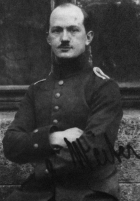
April 20, 1944
47.Cooking course v. April 20, 1944 – May 17, 1944 SS training kitchen Dachau
(Photo SS training kitchen Dachau in DF 4/74 inside back cover, the 48th course ran in Oranienburg from May 20th to June 17th, 1944, up to then around 1,750 troop cooks, kitchen bookkeepers and master chefs had been trained in Oranienburg, see also Kaienburg, Sachsenhausen , p. 344))
September 14, 1944
At the same time as other commanders, the commander in WW VII decided to fundamentally change the command structure in his military district. With the command deputy. Gen.Kdo VII.AK (Wehrkreiskommando VII), Az 35, No. 3010/44 g.Kdos, Ia, v. On September 14, 1944, this was now divided into “protected areas” and subordinate “protected areas” instead of the previous location areas. The accommodation areas of the two replacement divisions located in the WWF became protected areas:
Protected area “West” Div.No. 407 Augsburg
Protected area “East” Div.No. 467 Garmisch
Protected area “Mitte” location areas Munich, Fürstenfeldbruck
By order of March 16, 1945, Ref. A1, No. 1400/45, the Dachau district, previously the East Protected Area, was assigned to the Central Protected Area.
This reorganization of the military district served to increase the performance and training of troop leadership. The protected areas were divided into a total of 14 protected areas. The provisions on the subordination relationships stated: “.. All army troops located in their area and the alarm units of the Luftwaffe, the Waffen SS and the labor service are subordinate to the commanders of the protected areas….” A special feature should be mentioned that the Gauleiters also signed this order.
From then on, the respective troop commanders replaced the site elders in the protected areas and areas. The Central Protected Area, whose commander was the Wehrmacht commander from Munich, received its own general staff officer to align it with the two division staffs 407 and 467.
With the new protected area regulations, well-rehearsed staff members were now available for the ever-increasing territorial tasks. Simulation games for use against airborne landings and insurgent foreign workers were carried out everywhere in the following period.
(Joachim Brückner, End of the War in Bavaria, individual writings on the military history of the Second World War 30 MGFA, pp. 14 – 15, here BA-RH 53-7/1212)
November 00, 1944
- Cooking course at the “Waffen SS training kitchen” in November 1944 (found on eBay)
https://www.forum-der-wehrmacht.de/index.php?thread/23660-ss-lehrk%C3%BCchen/
November 00, 1944
At the end of October or beginning of November 1944, the SS main company z.b.V., which was originally set up in Dachau, returned to Dachau from Hamburg.
On November 15, 1944, the SS Main Office announced in the VOBl d. W SS, 5th year, 1944, v. 11/15/44, point 96 transfers, the transfer of the SS-Stammkp.z.b.V. from Hamburg-Langenhorn to Dachau. (N. Heitman dated March 7, 2000)
Apparently Dachau wasn’t supposed to be the “last solution”, but actually Graz-Tobelbad.
In the Ordinance Gazette of the Waffen-SS, 6th year, 1945, No. 3 from February 1st, 1945 it is stated under
Number 99 Deployment to the SS Stamm-Kp. e.g.V., arranged:
From the SS Stamm-Kp. e.g.V. So far only parts have been relocated to Graz – Tobelbad. The reception center is still in Dachau. March marches and all correspondence must therefore still be routed via Dachau.
(Telephone message from Uwe Kleinert dated May 11, 2008)
“…Harms once gave the reason for the change of quarters to M.-B. told. … Harms refused to use his disabled soldiers to guard the Neuengamme concentration camp in case an Allied landing took place on the North Sea coast. The concentration camp guards were then supposed to go into combat and Harm’s unit was supposed to take over the guard. This is how it turned out. Bassewitz-Behr and was then very angry. Harms also received a promotion ban, which would explain his rank of Hauptsturmführer in this large unit. Said to have been sometime in October/November 1944. Christmas was already celebrated in Graz. …
Harm’s wife, who is a few years older than him, comes from the Graz corner. ….” (Andre Freit from May 12, 2008)
The exact time of the company’s transfer to Graz is not known, but it was probably no longer in Dachau in April 1945!
Author Roland Pfeiffer (small part Georg Schwab) Images Georg Schwab
Final part will be published tomorrow.

